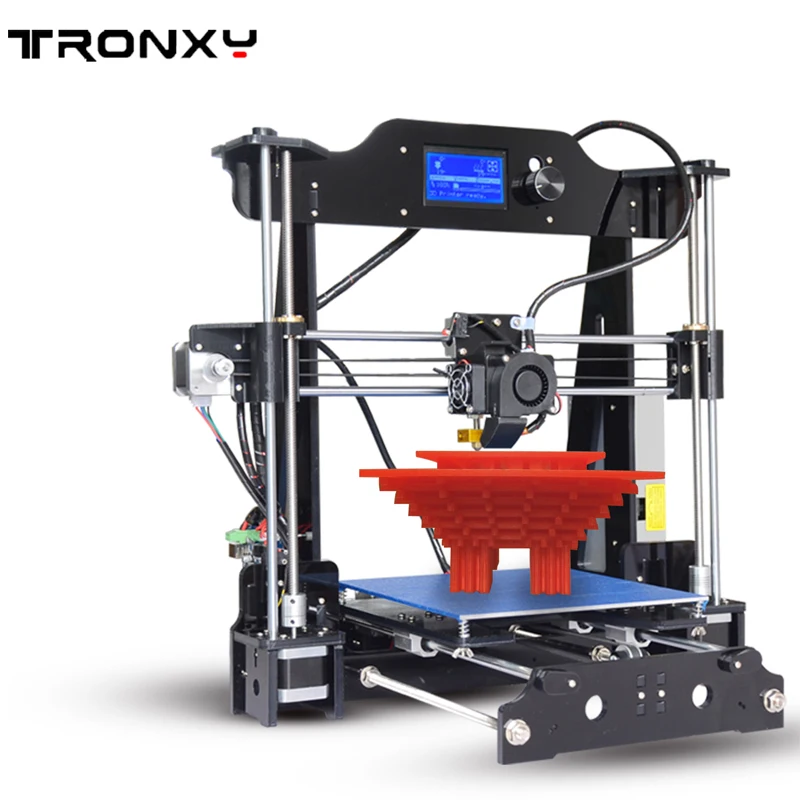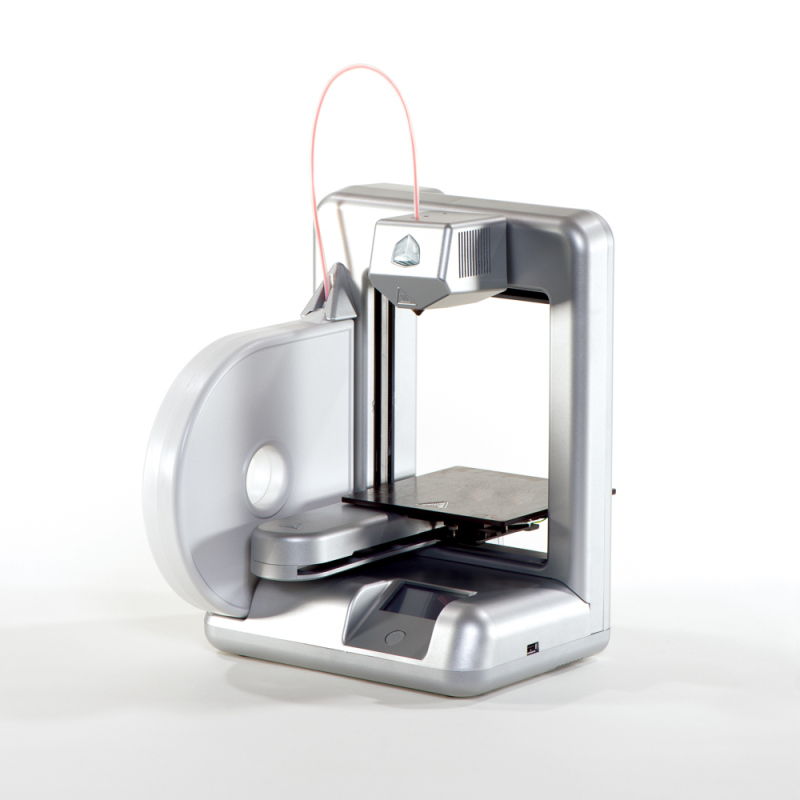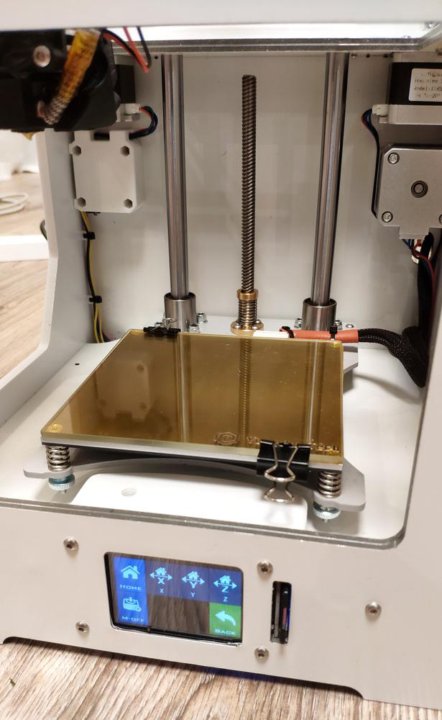3D printing and manufacturing
The evolution of 3D printing in manufacturing
Paul Benning, Chief Technologist at3D Print HP Inc. discusses the current technology trends within the manufacturing industry relating to 3D printing...
Paul Benning, Chief Technologist at 3D Print HP Inc. discusses the current technology trends within the manufacturing industry relating to 3D printing.
What is 3D printing?
3D printing is a manufacturing process that produces objects in accordance to a 3D digital model. By using a 3D printer and adding material layer by layer, such as plastics and metals, complex objects can be produced both rapidly and at low cost, in short runs or as one-of-a-kind parts. HP Multi Jet Fusion 3D technology enables customers to produce complex parts with controllable physical and functional properties at each point and provides speed, quality and strength throughout the manufacturing process for a range of industries and applications.
How has 3D printing evolved over the years?
We’re on the cusp of the 4th Industrial Revolution, where physical and digital technologies will radically alter how companies conceive, design, produce, distribute and repair nearly everything. The increased global demand for sustainable solutions and customised products has resulted in a surge in demand for 3D-printed parts and products. Technological innovations in the field have halved costs while delivering twice the performance. As the 3D printing sector moves beyond prototyping, use of this technology, particularly in supply chains, is becoming increasingly widespread.
In 2018, HP launched Metal Jet technology, the world’s most advanced 3D printing technology for the high-volume manufacturing of production-grade metal parts. It delivers mechanically functional final parts with up to 50x more productivity than other 3D printing methods, and at significantly lower cost compared to other binder jetting systems.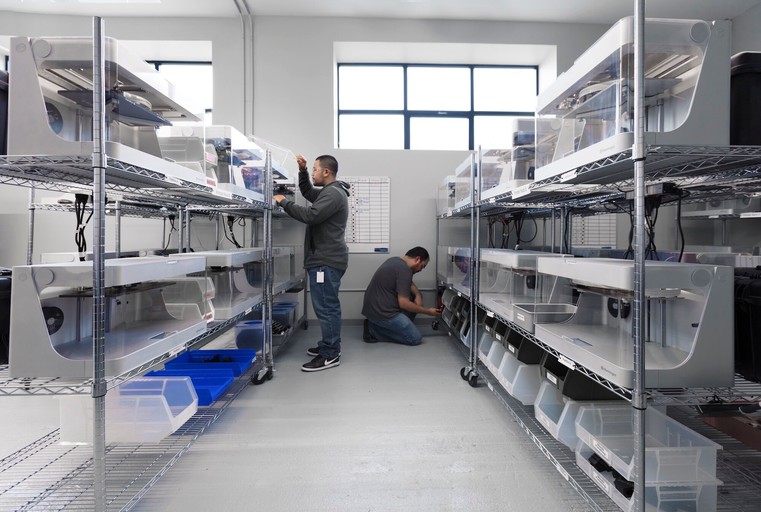
As we see more customers scale for production and further collaboration through a growing ecosystem of partners, the possibilities are growing for a new era of manufacturing.
What are the current trends in 3D printing?
A trend we’ll see is the accelerated impact of digital manufacturing take hold in the form of production applications, particularly across the automotive, industrial and medical sectors. In the auto sector, we’ve seen an increased focus on developing production-grade materials for auto applications as 3D printing gravitates from prototyping to full production of final parts and products. Additionally, as new platforms such as electric vehicles enter mass production, HP Metal Jet is expected to be leveraged for applications such as the light weighting of fully safety-certified metal parts. Industrial 3D manufacturing also enables the automotive industry to produce applications in new ways that were previously impossible, along with the ability to design application-specific parts for individual systems or models.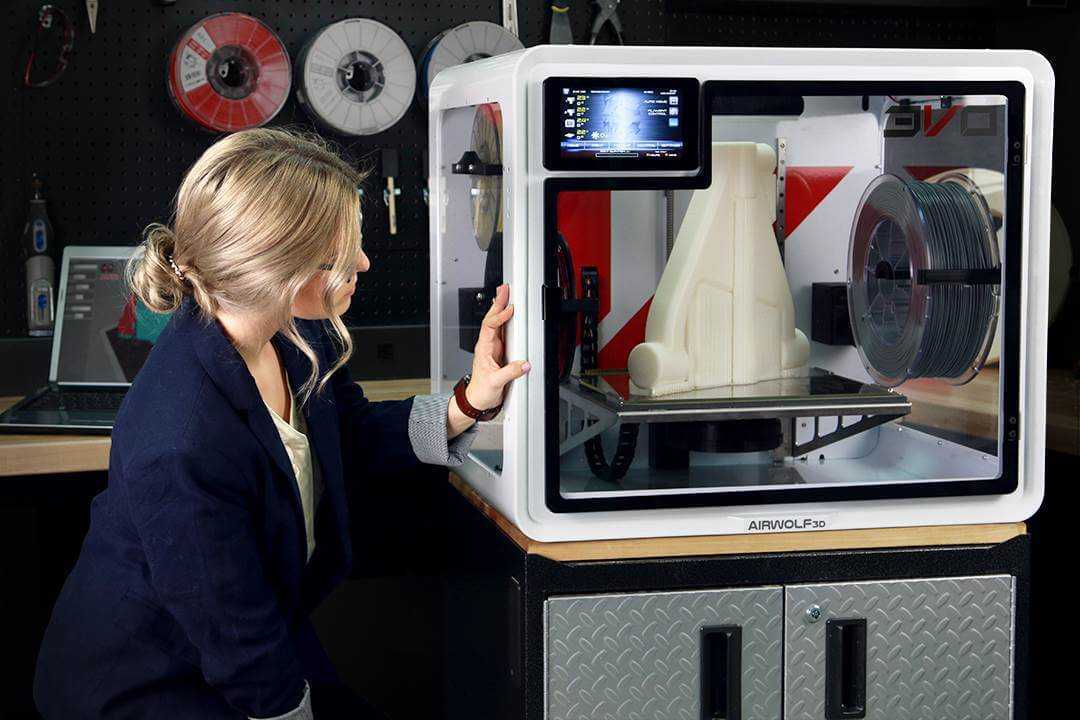
What innovative technology have you seen being used with 3D printing?
One really powerful example of 3D printing we’ve seen in the last few weeks is how 3D suppliers and digital manufacturers are coming together to help produce vital applications to help fight COVID-19. HP and its global network of partners and customers are printing crucial parts such as ventilator valves, face mask adjusters and hands-free door handles - for local hospitals and healthcare providers around the world.
Beyond how 3D is supporting the current situation at hand, we’ve seen myriad ways that the technology has been used – everything from customised prosthetic limbs, to parts that are used in cars, to invisible braces helping people to achieve their desired smile.
With industries facing increased customer centricity when it comes to the services they provide, how can 3D printing help to drive customer centricity?
One of the major benefits of 3D printing is the ability to customise products and parts fully for the end user. This may be in the form of design preference, or it could serve a more practical purpose such as improving the fit or usability of a product. For example, 3D printing makes it easy to customize prosthetic limbs and shortens the production time from weeks to days, and it can deliver custom-fitted and individualized footwear, including insoles, through innovative 3D scanning, dynamic gait analysis and manufacturing technologies.
This may be in the form of design preference, or it could serve a more practical purpose such as improving the fit or usability of a product. For example, 3D printing makes it easy to customize prosthetic limbs and shortens the production time from weeks to days, and it can deliver custom-fitted and individualized footwear, including insoles, through innovative 3D scanning, dynamic gait analysis and manufacturing technologies.
How can 3D printing make manufacturing more agile?
By allowing consumers to dictate demand, 3D printing lends itself to increased supply chain mobility, flexibility and adaptability, therefore reducing costs and waste. Companies no longer have to predict consumer demand by gambling on how much of a product they will sell; 3D printing ensures the infinite flexibility as they are able to print what they need.
SEE ALSO:
-
Industry 4.0: managing the Cultural Impact in Manufacturing
-
Oracle: a modern platform for smart connected factories
-
PwC: digital factories shaping the future of manufacturing
-
Read the latest issue of Manufacturing Global here
3D printing also allows manufacturers to prototype more successfully, as they can print a new model/part with every advancement or amendment of the design, through a simple tweak on the software, printed instantly.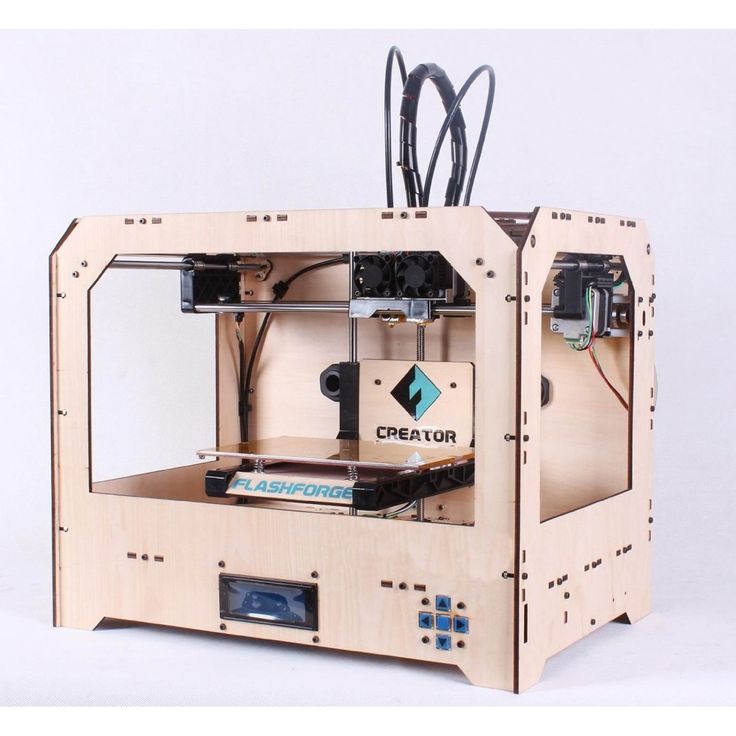 Thus, saving time and money rather than if they had to produce new moulds each time.
Thus, saving time and money rather than if they had to produce new moulds each time.
3D printing also allows for incredible volumes to be produced in a short time frame. HP customer SmileDirectClub uses Mult Jet Fusion 3D printing solutions to produce more than 50,000 personalised moulds each day, and anticipates printing nearly 20 million mouth molds over the next 12 months alone.
In 2018, more than 10 million parts were produced using HP Multi Jet Fusion technology worldwide.
How can 3D printing benefit the manufacturing industry?
3D printing completely reinvents the way things are conceived, designed, produced and distributed, significantly lowering development and production costs, immensely simplifying logistics, and lowering carbon footprint. It holds great potential to revolutionise supply chains, and we are beginning to see an increase in the number of companies who turn to this form of manufacturing in order to stay competitive and create products faster.
3D printing will be the catalyst for significant shifts within the global manufacturing sector, and leaders will be defined by their ability to harness its full disruptive power. In a fully digital future, the production of goods will be driven closer to the consumer, democratizing manufacturing on a worldwide scale and allowing products to be mass-customized.by traditional processes, designers will be free to create entirely new categories of products, as the line between ideas and physical reality erodes. And manufacturers, no longer tethered to overseas factories, will shorten supply chains with a newfound ability to custom-produce anything, anywhere.
What are the challenges of 3D printing?
The most significant hurdle is the change of mindset. It is crucial to think about designing for 3D from the first stages of product development, to think about the wider implications of how development is staged to full scale production, and how supply chains can be further optimized.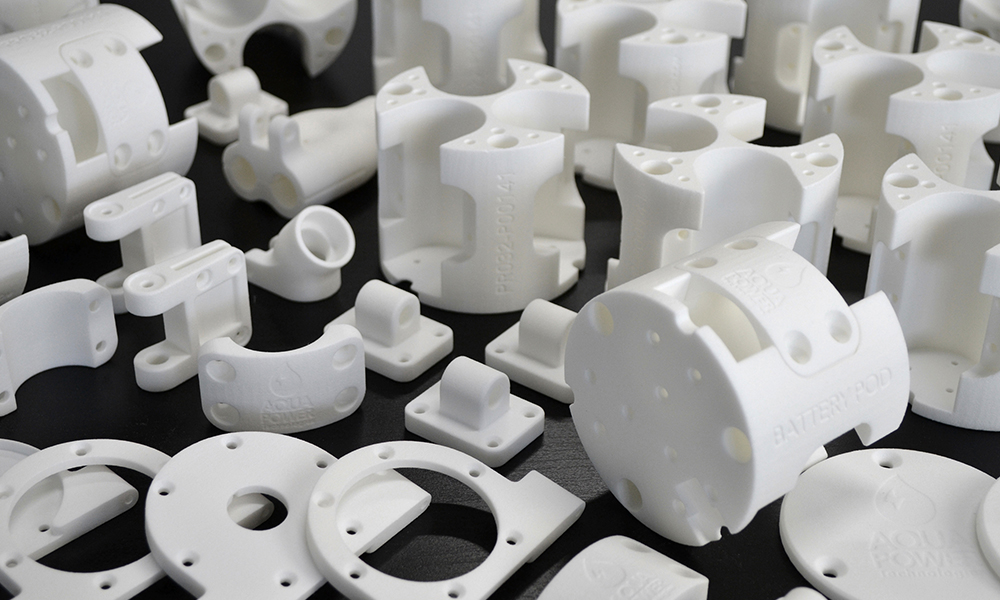 There are deep, engrained sense of limits and hurdles for those who have worked decades in traditional manufacturing. With 3D manufacturing, there is almost a re-learning process that needs to take place – the vast majority those limits no longer apply. The design possibilities are limitless. And, of course, there are new skills that must be developed to fully leverage these possibilities. For engineers, new elements of the design process will be introduced into their roles where they will need to learn the mechanics of 3D printing to become experts in the processes and best support operational functions during production.
There are deep, engrained sense of limits and hurdles for those who have worked decades in traditional manufacturing. With 3D manufacturing, there is almost a re-learning process that needs to take place – the vast majority those limits no longer apply. The design possibilities are limitless. And, of course, there are new skills that must be developed to fully leverage these possibilities. For engineers, new elements of the design process will be introduced into their roles where they will need to learn the mechanics of 3D printing to become experts in the processes and best support operational functions during production.
What applications of 3D printing have you seen within the industry?
3D printing is being used in a variety of industries including automotive, manufacturing, healthcare and consumer goods. Alongside the incredible efforts to help support the COVID-19 pandemic, I’ve also seen some fantastic applications in the commercial sector.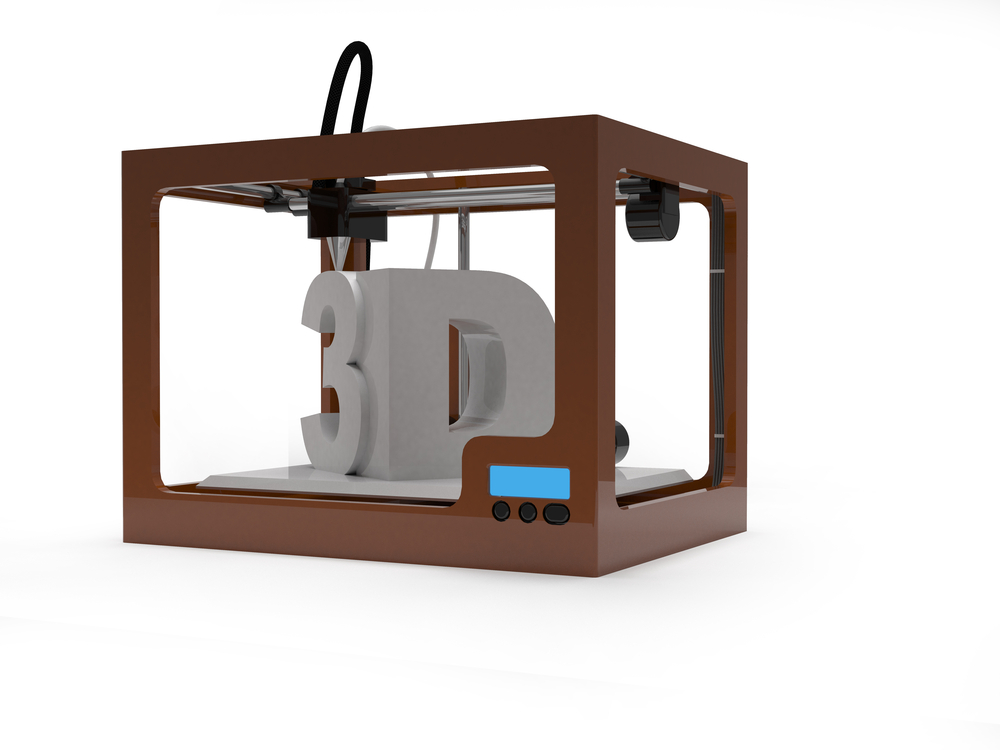 3D printing is being used by major car manufacturers to produce gear sticks and safety gloves, fashion designers are producing 3D printed handbags and shoes and companies are printing custom foot insoles with just a scan of a patient’s foot. The possibilities really are endless and I’m looking forward to seeing what comes out of the industry over the next few years.
3D printing is being used by major car manufacturers to produce gear sticks and safety gloves, fashion designers are producing 3D printed handbags and shoes and companies are printing custom foot insoles with just a scan of a patient’s foot. The possibilities really are endless and I’m looking forward to seeing what comes out of the industry over the next few years.
The work being done by Jaguar Land Rover as they advance EV development, or Vestas VBIC, the largest provider of wind turbines in the world, are significant examples of how 3D printing is enabling industries to move seamlessly from prototyping to production, with incredible flexibility to make improvements in near real time.
For more information on manufacturing topics - please take a look at the latest edition of Manufacturing Global.
Follow us on LinkedIn and Twitter.
Industrial Applications of 3D Printing: The Ultimate Guide
Industrial Applications of 3D Printing:
The Ultimate Guide
TABLE OF CONTENTS
Introduction
Aerospace & Defence
Automotive
Medical & Dental
Consumer Goods
Industrial Goods
What is the Future of 3D Printing?
Introduction
3D printing, also known as additive manufacturing, has come a long way since it was first developed in the 1980s. While 3D printing originated as a tool for rapid prototyping, it has now evolved to cover a number of different technologies.
While 3D printing originated as a tool for rapid prototyping, it has now evolved to cover a number of different technologies.
The evolution of 3D printing has seen a rapid growth in the number of companies adopting the technology. The applications and use cases vary across industries, but broadly include tooling aids, visual and functional prototypes — and even end-use parts.
As the potential applications for 3D printing increase, companies are beginning to find ways to create new business models and opportunities with the technology.
In this guide, we’ll be exploring the current state of 3D printing across a range of industries, including how the technology is being used across sectors. Using real-life examples, we hope that this guide gives you an in-depth understanding of how 3D printing is being used to drive innovation and business growth.
CHAPTER 1
Aerospace & Defence
The aerospace and defence (A&D) industry is one of the earliest adopters of 3D printing, with the first use of the technology going back to 1989. Now, three decades later, A&D represents a 16.8% share of the $10.4 billion additive manufacturing market and heavily contributes to ongoing research efforts within the industry.
Now, three decades later, A&D represents a 16.8% share of the $10.4 billion additive manufacturing market and heavily contributes to ongoing research efforts within the industry.
The advancement of AM within A&D is in large part driven by key industry players, including GE, Airbus, Boeing, Safran and GKN. These companies and others have identified the value proposition 3D printing brings to:
- Functional prototypes
- Tooling
- Lightweight components
As we can see, 3D printing for aerospace isn’t limited to prototypes. Real, functional parts are also being 3D printed and used in aircraft. A few examples of parts that can be produced with 3D printing include air ducts (SLS), wall panels (FDM) and even structural metal components (DMLS, EBM, DED).
The Benefits of 3D printing for Aerospace & Defence
Low-volume production
For industries like aerospace and defense, where highly complex parts are produced in low volumes, 3D printing is ideal.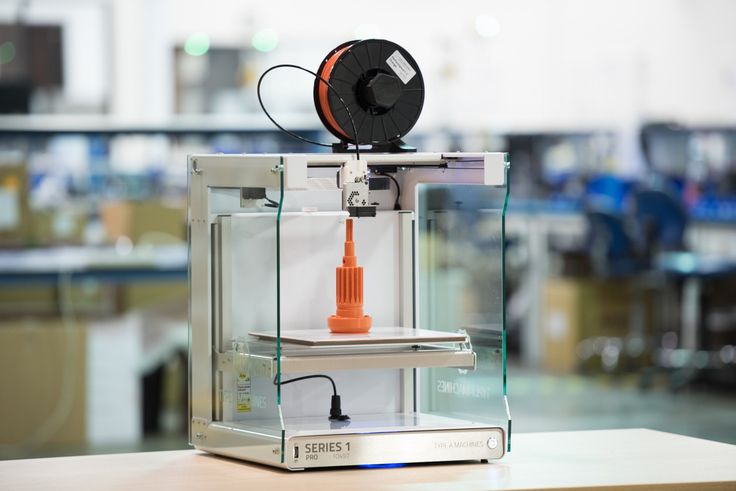 Using the technology, complex geometries can be created without having to invest in expensive tooling equipment. This offers aerospace OEMs and suppliers a cost-effective way to produce small batches of parts cost-effectively.
Using the technology, complex geometries can be created without having to invest in expensive tooling equipment. This offers aerospace OEMs and suppliers a cost-effective way to produce small batches of parts cost-effectively.
Weight reduction
Alongside aerodynamics and engine performance, weight is one of the most important factors to consider when it comes to aircraft design. Reducing the weight of an aircraft can significantly reduce its carbon dioxide emissions, fuel consumption and payload.
This is where 3D printing comes in: the technology is an ideal solution for creating lightweight parts, resulting in considerable fuel savings. When coupled with design optimisation tools like generative design software, the potential for increasing the complexity of a part is almost limitless.
Material efficiency
Since the 3D printing process works by producing parts layer by layer, material is, for the most part, used only where needed.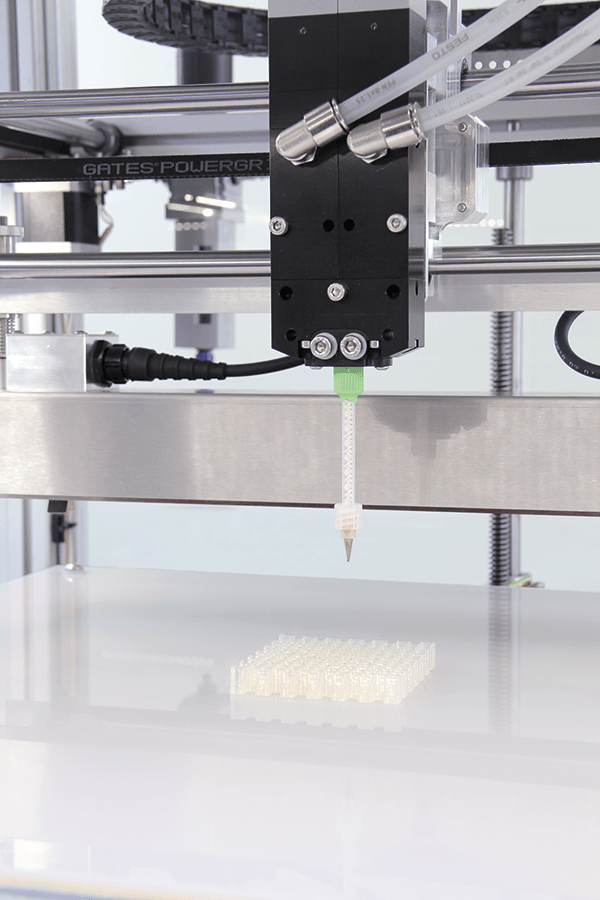 As a result, it produces less waste than traditional subtractive methods.
As a result, it produces less waste than traditional subtractive methods.
The selection of available 3D printable materials for aerospace and defence applications ranges from engineering-grade thermoplastics (e.g. ULTEM 9085, ULTEM 1010, PAEK, reinforced Nylon) to metal powders (high-performance alloys, titanium, aluminium, stainless steel).
The range of available 3D printable materials is constantly expanding, unlocking advanced aerospace applications.
Part consolidation
One of the key benefits of 3D printing is part consolidation: the ability to integrate multiple parts into a single component. Reducing the number of parts needed can significantly simplify the assembly and maintenance process by reducing the amount of time needed for assembly.
Maintenance & repair
The average lifespan of an aircraft can range between 20 and 30 years, making maintenance, repair and overhaul (MRO) an important function in the industry. Metal 3D printing technologies like Direct Energy Deposition are commonly used to repair aerospace and military equipment. Turbine blades and other high-end equipment can also be restored and repaired by adding material to worn-out surfaces.
Metal 3D printing technologies like Direct Energy Deposition are commonly used to repair aerospace and military equipment. Turbine blades and other high-end equipment can also be restored and repaired by adding material to worn-out surfaces.
Aerospace applications
Spotlight: ArianeGroup
3D-printed rocket components
3D printing, particularly with metals, is increasingly being used in the manufacture of rockets. The technology is enabling engineers to innovate the design of rocket parts and manufacture them in a shorter time frame.
One example of this is an injector head for the Ariane 6 launcher, developed by ArianeGroup, a joint venture of Airbus Group and Safran.
An injector head is one of the core elements of a propulsion module, which forces the fuel mixture into the combustion chamber.
Traditionally, injector heads are made from dozens or even hundreds of parts, which need to be machined and welded together. In contrast, 3D printing enables these components to be manufactured as a single piece.
In the case of the injector head for the Ariane 6 launcher, the team took a design that originally required 248 components and reduced it down to one 3D-printed part. The material used for the part was a nickel-based alloy.
The part, which wouldn’t be possible to produce by conventional methods, was then 3D printed using SLM technology.
While casting and machining used to take longer than three months, the production time with AM was reduced to 35 hours, using an EOS M 400-4 3D printer with four parallel lasers. An additional advantage included a cost reduction of 50%.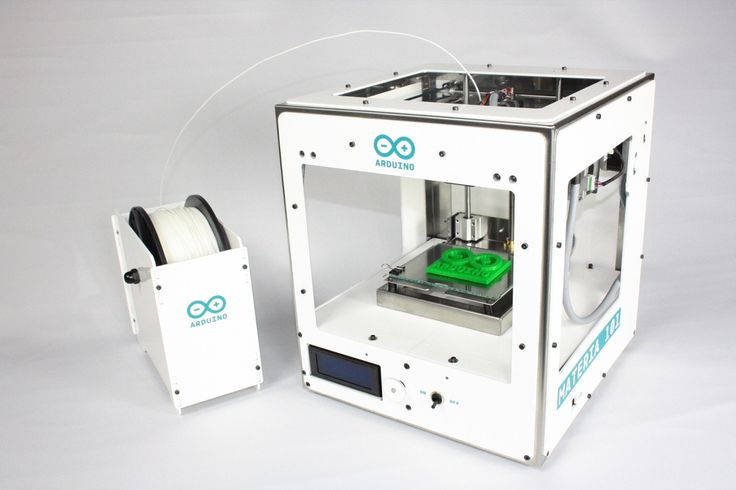
A 3D-printed injector head for Ariane 6 launcher [Image credit: EOS]
Aircraft interior componentsSpotlight: Airbus
3D-printed plastic parts can be incredibly useful for aerospace applications, such as aircraft interiors.
The cabin interiors of a commercial aircraft will need to be updated periodically, a process that can involve replacing components like wall panels. The need for customisation means that parts will typically be produced in low volumes. Quick turnaround times are also a must.
A good example of this is Airbus. As of 2018, the company has produced and is set to install 3D-printed spacer panels on its commercial A320 aircraft. Traditionally, new plastic components would be produced using injection moulding — an expensive and complex procedure for the low volumes, specialised requirements and high complexity needed.
With 3D printing (FDM), Airbus has been able to produce components with complex features like lattice structures, without any additional manufacturing cost.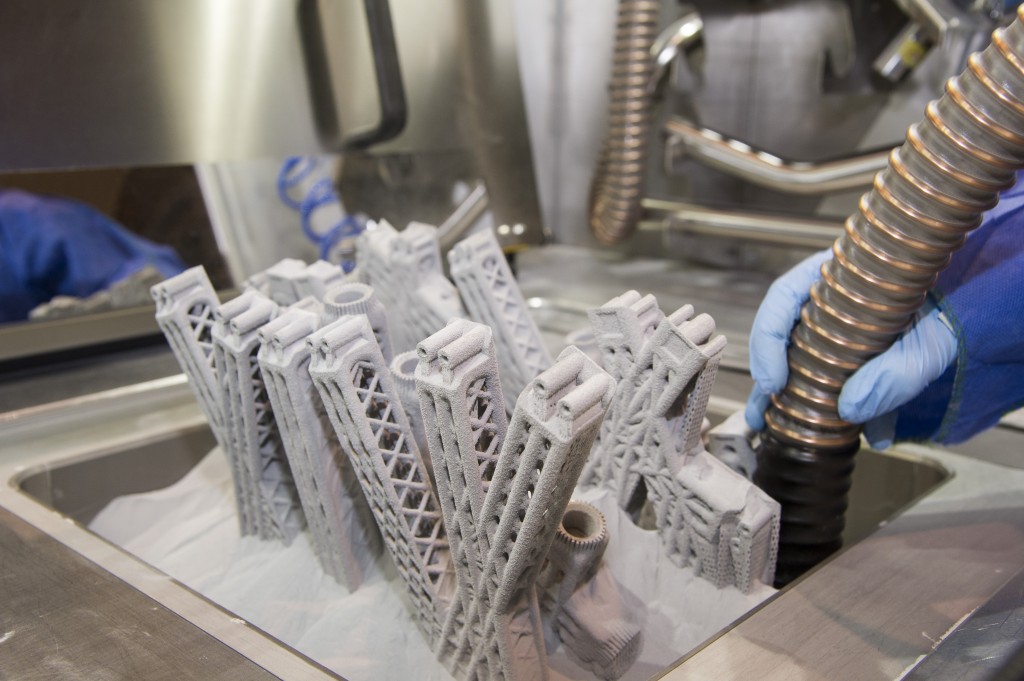 The result: spacer panels that are 15% lighter than panels created using traditional methods — contributing to the weight reduction of the aircraft itself.
The result: spacer panels that are 15% lighter than panels created using traditional methods — contributing to the weight reduction of the aircraft itself.
Spotlight: Nano Dimension and Harris Corporation
When it comes to defence, 3D printing has the potential to change the way end parts for military equipment are produced. Current defence applications range from complex brackets and small surveillance drones, to jet engine components and submarine hulls.
Electronics 3D printing is a young yet increasingly growing area of interest for defence companies. With the technology, engineers are currently able to design and produce prototypes of complex circuit boards and antennas in-house.
For manufacturers, this means being able to accelerate the product development process by eliminating the need to outsource high-value projects to third parties.
Antennas are an important example of how 3D printing is speeding up the design process for electronic devices.
Take the case of Harris Corporation which, alongside Nano Dimension, a manufacturer of 3D printing electronics systems, achieved a key breakthrough in 2018 when it produced antennas using 3D printing.
Harris Corp. and Nano Dimension successfully partnered to produce a 3D-printed RF circuit [Image credit: Harris Corp.]
ToolingSpotlight: Latécoère & Moog Aircraft Group
Aerospace companies can also benefit from 3D printing by using the technology to produce custom tooling equipment like jigs and fixtures on demand.
French aerospace manufacturer Latécoère used 3D printing to cut down lead times for custom tooling. Previously, the company used CNC milling to manufacture these tools, with lead times of up to six weeks. Now, with FDM 3D printers, Latécoère can create production tools in just a couple of days — a lead time reduction of 95%.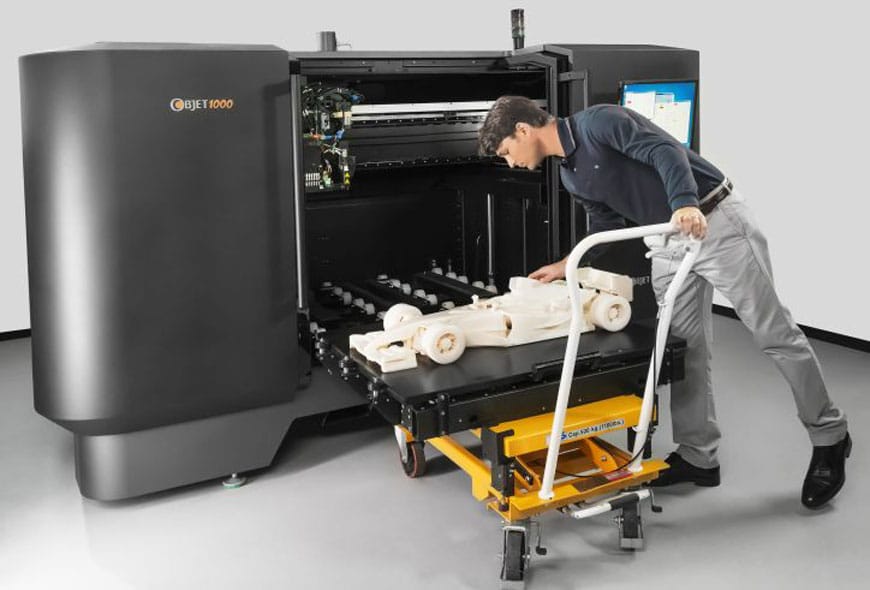
The company claims this new approach to tooling production also cuts costs by 40%. Notably, the tools are ergonomically customised, making the operator’s job easier and resulting in faster and more efficient production times.
Similarly, the Moog Aircraft Group is using FDM 3D printing to produce tools like coordinate measuring machines (CMM) in-house. In the past, the company outsourced this fixture, with the process taking between 4 to 6 weeks. Now Moog uses 3D printing in-house, making CMM fixtures in approximately 20 hours. Fixtures that would have previously cost over £2,000 can now be made for a couple of hundred pounds.
Spare parts
Spotlight: Satair
Heavily reliant on spare and replacement parts, aerospace companies increasingly require short lead times for this application.
To meet this demand, suppliers to the aerospace industry must find ways to provide manufacturing services faster.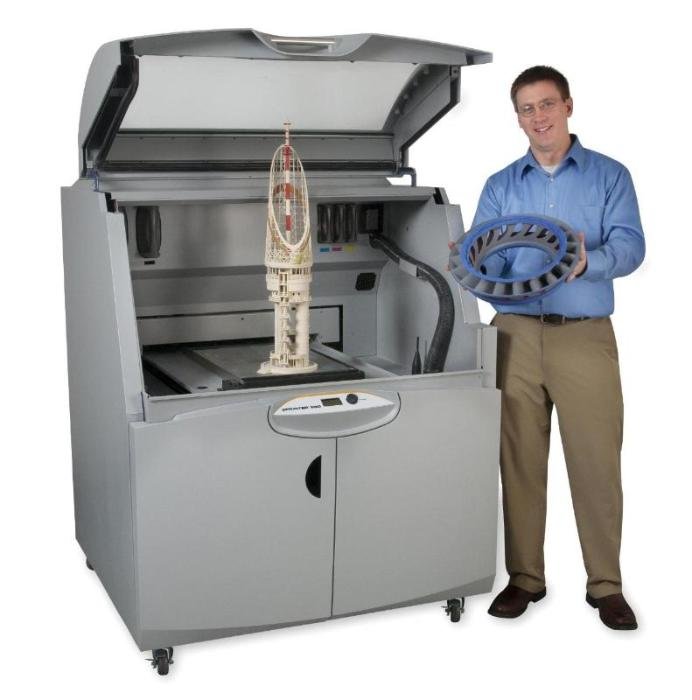 Additive manufacturing enables spare parts can be produced quickly at the point of need. This, in turn, reduces the need for vast inventories of stock, helping to reduce inventory costs and ensure parts are produced locally.
Additive manufacturing enables spare parts can be produced quickly at the point of need. This, in turn, reduces the need for vast inventories of stock, helping to reduce inventory costs and ensure parts are produced locally.
Satair is an Airbus subsidiary that specialises in the distribution of spare parts, offering additively manufactured plastic and metal parts.
The spare parts provider uses 3D printing to produce customised parts and tooling, with the technology helping to greatly reduce lead times and simplify complex supply chain logistics. With this strategic approach, the company is able to improve its turnaround times by quickly producing spare parts for maintenance operations.
The aerospace and defence industry makes up a significant proportion of the AM market. The reasons for this are simple: additive manufacturing offers enormous value, from improving aircraft performance to offering a more agile approach to spare parts production.
Making the move towards production, however, requires additive manufacturing to overcome certain challenges. These include the certification of 3D-printed parts, better process repeatability and security.
These include the certification of 3D-printed parts, better process repeatability and security.
Nevertheless, with considerable investment being made to develop and certify 3D printing processes and materials, the future of 3D printing for the aerospace and defence industry certainly looks bright.
Related articles
CHAPTER 2
Automotive
The automotive industry is a growing user of additive manufacturing: in 2019 alone, global automotive AM revenues reached $1.4 billion. This figure only looks set to increase, as revenues relating to AM in automotive part production are expected to reach $5.8 billion by 2025, according to a SmarTech report. In areas like motorsports and performance racing, design tools like generative design and topology optimisation are slowly changing traditional approaches to designing parts.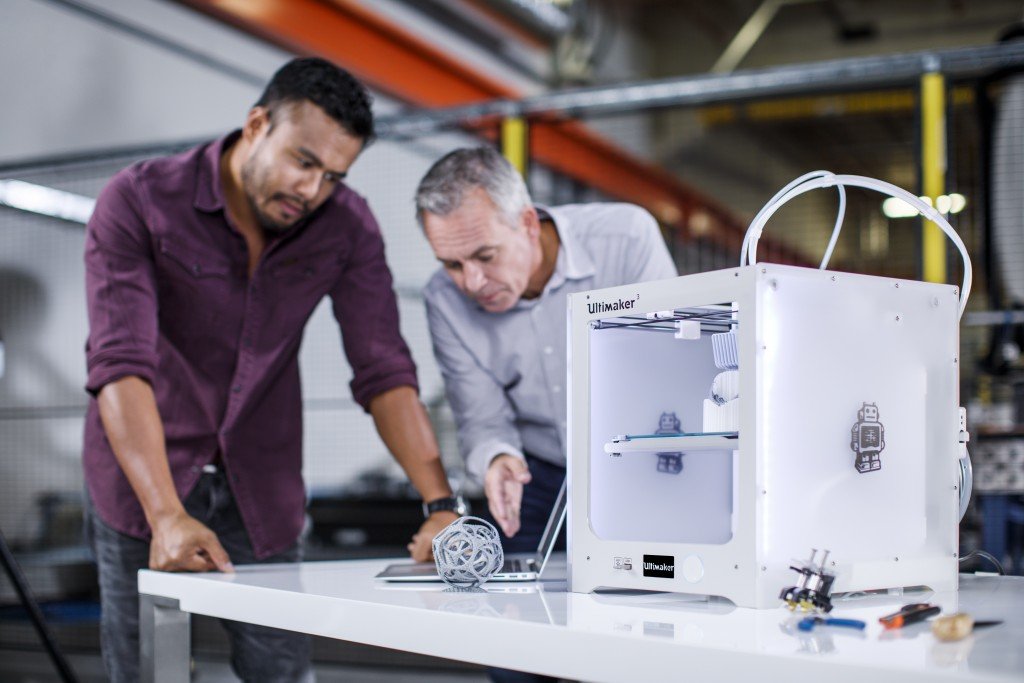
While prototyping currently remains the main application of 3D printing in the automotive industry, companies are increasingly finding other use cases, such as tooling. Additionally, the several automotive companies are beginning to find innovate end-use applications for 3D printing, signalling an exciting development for the sector.
The Benefits of 3D printing for Automotive
Faster product development
Prototyping has become a key part of the product development process, offering a means to test and validate parts before they are manufactured. 3D printing offers a quick and cost-effective approach to designing and producing parts. Since the need for tooling is eliminated, product teams can significantly accelerate product development cycles.
Greater design flexibility
The ability to produce designs quickly gives designers greater flexibility when testing multiple design options.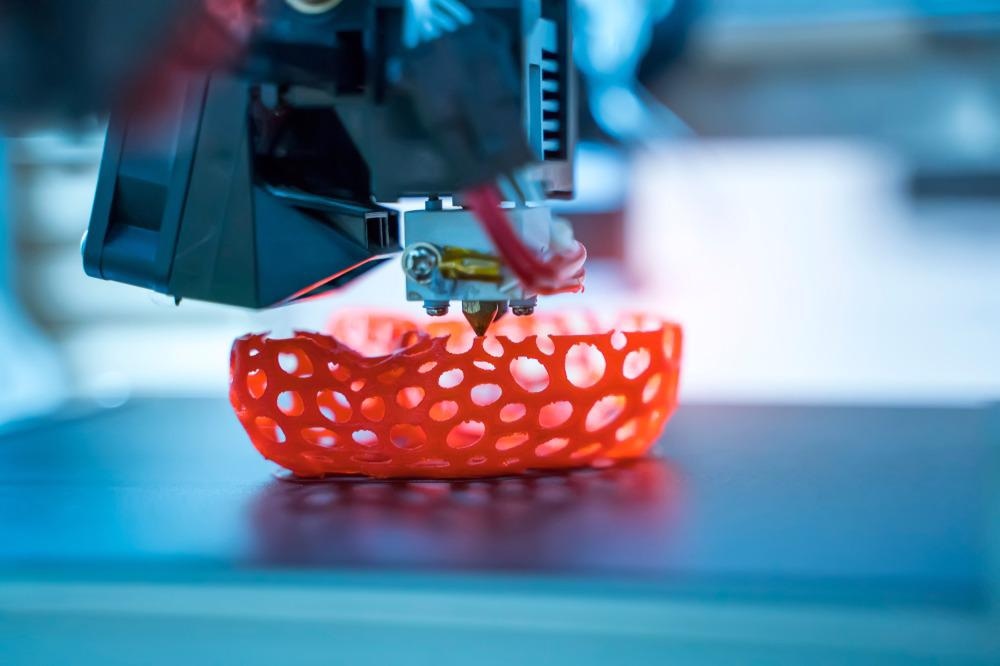 3D printing enables designers to make quick design changes and modifications in a fraction of the time.
3D printing enables designers to make quick design changes and modifications in a fraction of the time.
Customisation
3D printing offers automakers a cost-effective and flexible way to produce customised parts. Within the luxury and motorsports segment of the industry, companies are already using the technology to produce personalised parts for both the interior and exterior parts of a vehicle.
Create complex geometries
With the majority of car components requiring complex geometries like internal channels (for conformal cooling), thin walls and fine meshes, AM enables highly complex parts to be produced that are still lightweight and durable.
Automotive applications
Spotlight: Porsche
3D-printed custom seats
Porsche has recently introduced a new concept for sports car seating that leverages 3D printing and lattice design.
The new seats feature polyurethane 3D-printed central seat and backrest cushion sections, which can be customised by three firmness levels: hard, medium and soft.
With its personalised seating, the German automaker is taking cues from the motorsport sector, where customised driver-specific seat fitting is a norm.
Porsche plans to 3D print 40 prototype seats for use on European race tracks as early as May 2020, with customer feedback being used to develop the final street-legal models for mid-2021.
Down the line, Porsche wants to expand seat customisation beyond firmness and colour by personalising the seat to customer’s specific body contour. 3D printing currently remains the only technology that can enable this level of customisation.
PrototypesPrototyping has been the primary use of 3D printing for automotive applications. With the ability to produce multiple design iterations in a shorter amount of time, 3D printing is an effective tool for product development. The technology has now evolved to where it can be used to create functional prototypes using high-performance materials like ULTEM and PEEK.
The technology has now evolved to where it can be used to create functional prototypes using high-performance materials like ULTEM and PEEK.
Spotlight: Ford Motor Company
To produce high-quality parts, tooling aids are needed for manufacturing and assembly. While tooling equipment (like injection moulds, jigs and fixtures) aren’t prototypes or end parts, they remain a vital element of the production process.
With 3D printing technologies like FDM and SLS, automotive companies are able to produce tooling aids at a fraction of the cost, greatly increasing efficiency on the factory floor. Tooling can also be customised for improved functionality at a significantly lower cost than conventional methods.
A great example of tooling innovation is Ford which, in 2018, was awarded for its use of of 3D printing for tooling.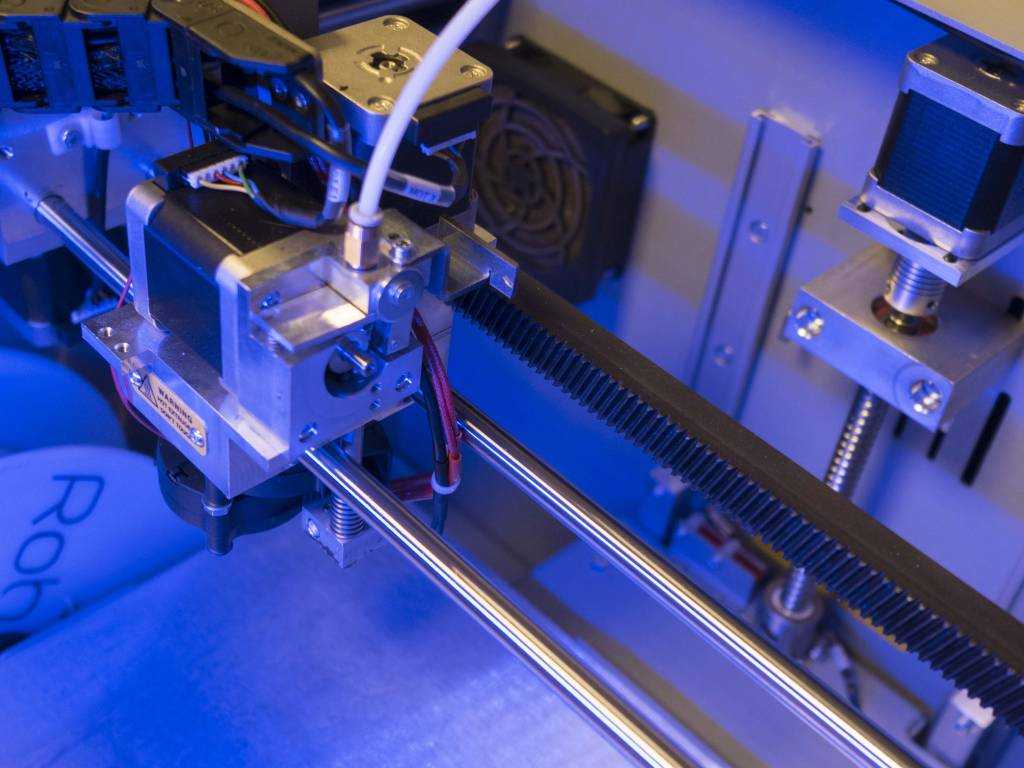
One of the company’s award-winning tools was an assembly lift assist, produced using FDM. The 3D-printed part cost 50% less than a conventional counterpart and significantly reduced lead times.
Weight reduction was a key factor in this use case — a lighter lift assist device would make it easier to operate and reduce repetitive motion injuries. With 3D printing, engineers were able to produce a significantly lighter fixture.
Spare and replacement parts
Spotlight: Porsche
Inventory costs constitute a significant proportion of expenditure for many automotive OEMs and suppliers. Within conventional manufacturing, mass producing spare parts is commonplace. However, this often leads to long delivery times and high inventory costs.
Additive manufacturing has the potential to transform the way spare parts are manufactured and distributed — through on-demand manufacturing.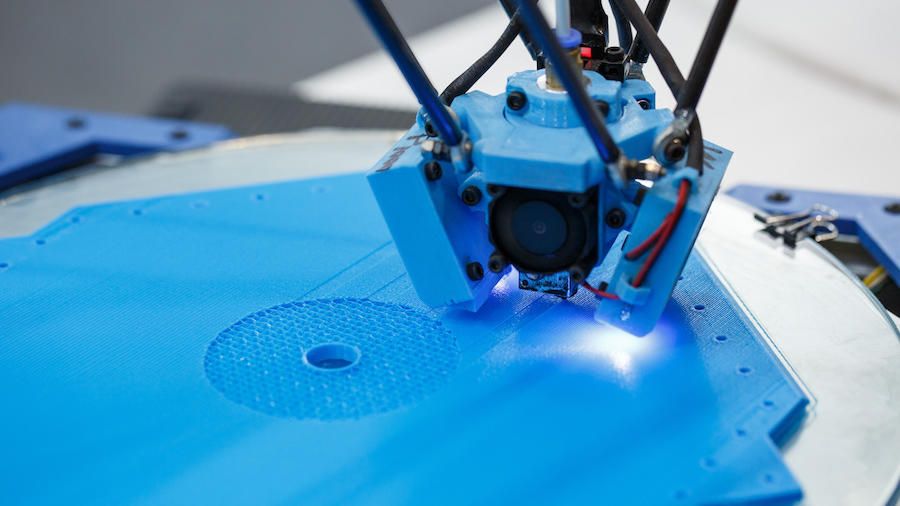 This means that parts are produced locally, at the time of need. Coordinating supply and demand in this way could not only drastically reduce inventory costs, but also slash delivery times to the end customer.
This means that parts are produced locally, at the time of need. Coordinating supply and demand in this way could not only drastically reduce inventory costs, but also slash delivery times to the end customer.
German car manufacturer Porsche is taking advantage of 3D printing for this very purpose. For collectors, Porsche’s Classic cars can be highly sought after. Not having the right part, however, can mean that a car can no longer function. Yet the relatively low demand, coupled with short production runs, means that stocking a high number of spare parts for such cars isn’t feasible.
This is where 3D printing comes in.
In early 2018, the company announced its use of 3D printing to produce spare parts for its rare and classic cars. Combining SLM technology for metal components and SLS for plastics, Porsche has been able to make a wide selection of high-quality rare parts available to its customers at a fraction of the cost.
End-use partsSpotlight: BMW
One of the major barriers to using additive manufacturing for production is the high production volumes typically required for the automotive industry (over 100,000 parts per year).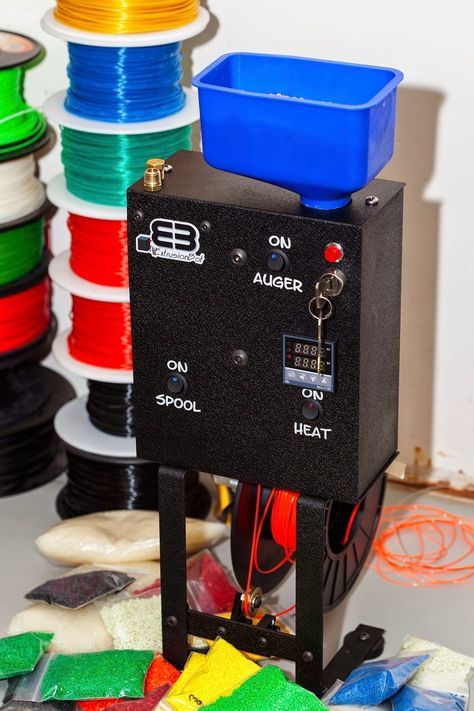 However, recent years have seen great improvements in the speed and size of industrial printers as well as greater material availability.
However, recent years have seen great improvements in the speed and size of industrial printers as well as greater material availability.
As a result, AM is becoming a viable manufacturing option for certain medium-size production runs, particularly in areas like motorsports and luxury vehicles, where production numbers are lower than average.
With over 1 million parts 3D-printed in the last decade, BMW finds itself among the industry’s frontrunners when it comes to additive manufacturing.
In the case of end parts, BMW has successfully used 3D printing to produce a metal fixture for its i8 Roadster model. Engineers created an optimised roof bracket (a fixture that helps to fold and unfold the vehicle’s soft top) that weighs 44% less than previous versions.
Today, the company can 3D print up to 238 of these parts per platform, making the roof bracket the first mass-produced, additively manufactured automotive component.
3D printing is gradually changing the way vehicles are developed today.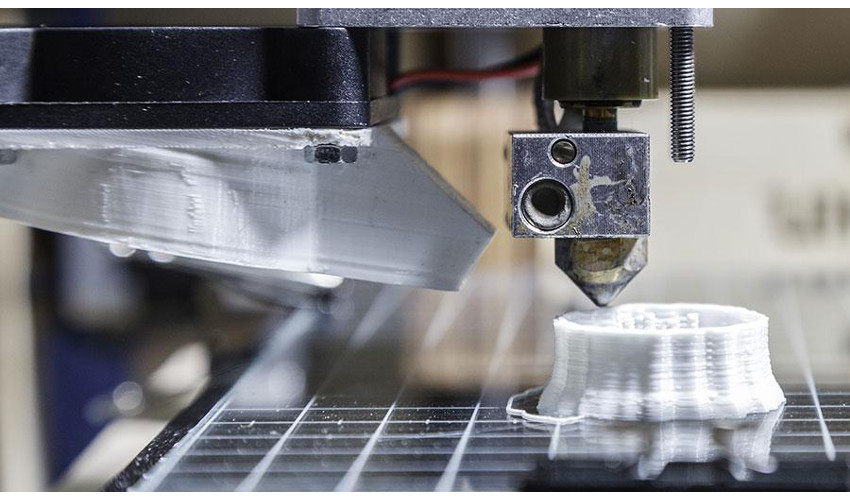 Whether it’s a commercial vehicle, truck or racing car, the technology offers automotive engineers and designers the tools to test the limits of design and performance.
Whether it’s a commercial vehicle, truck or racing car, the technology offers automotive engineers and designers the tools to test the limits of design and performance.
Yet, the key drivers behind the increased adoption of 3D printing in automotive remain the ability to speed up time to market and reduce product development costs. As 3D printing technologies evolve, the prospect of large-scale manufacturing will become increasingly likely.
Related articles
CHAPTER 3
Medical & Dental
The medical and dental industry is one of the fastest-growing adopters of additive manufacturing. And with 97% of medical AM professionals confident that the use of 3D printing will continue to increase within the sector, this trend seems set to continue.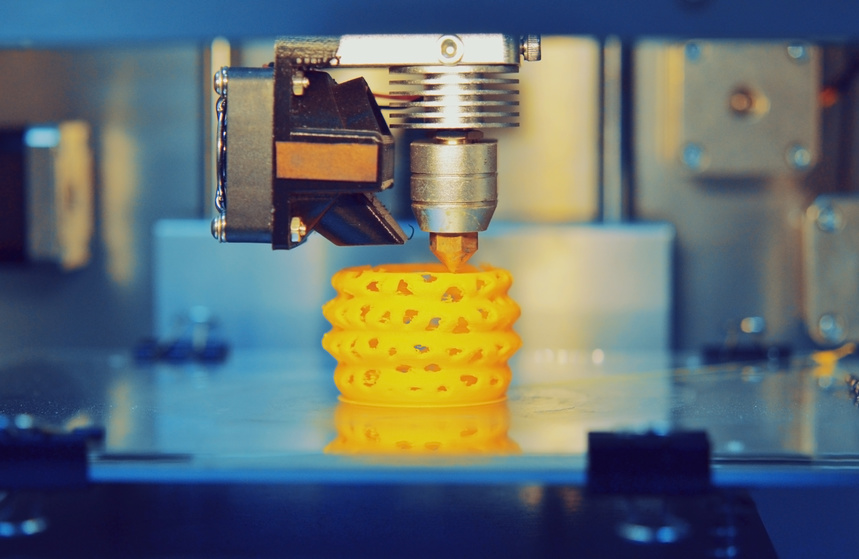 From medical devices to prosthetics and even bioprinting, the applications of additive manufacturing for the medical industry are versatile and wide-ranging.
From medical devices to prosthetics and even bioprinting, the applications of additive manufacturing for the medical industry are versatile and wide-ranging.
The Benefits of 3D printing for Medical & Dental
What is driving this growth? The geometric freedom afforded by AM and the ability to provide more personalised patient care cost-effectively is hugely appealing. And when coupled with CT scanning, 3D printing can be used to provide patient-specific solutions, such as implants and dental appliances.
Enhanced medical devices
3D printing is an ideal technology for creating or optimising designs for medical devices. Thanks to low-cost rapid prototyping, medical device manufacturers have greater freedom in designing new products, helping to bring new medical devices to the market much faster.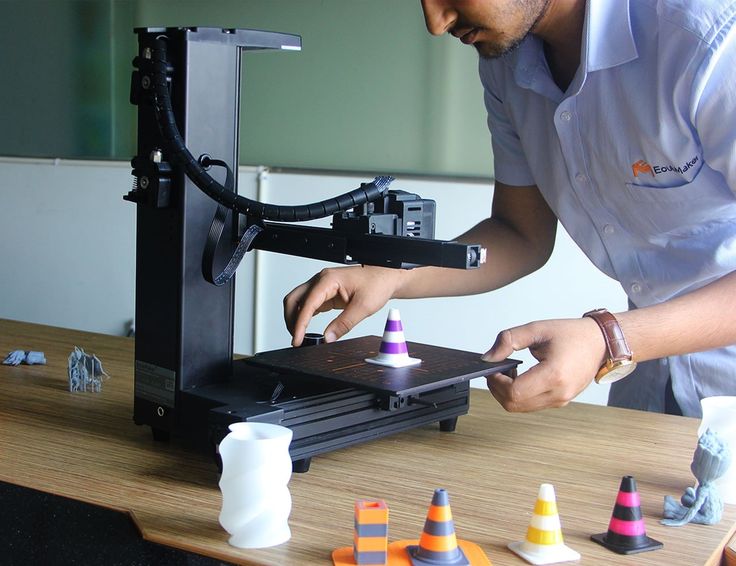
Personalised healthcare
The medical industry can leverage the capabilities of 3D printing to create patient-specific devices. For example, devices such as prosthetics and implants can be produced faster and more affordably than with traditional manufacturing methods.
Medical applications
Spotlight: 3D printing for clear aligners
Clear aligners are dental devices used to adjust and straighten teeth. It is estimated that the majority of clear aligners are currently produced using 3D-printed moulds.
The key technologies enabling this are Stereolithography (SLA) and Material Jetting, due to their high speed and accuracy. In addition to these resin-based processes, HP’s powder-based technology, Multi Jet Fusion, is also gaining traction.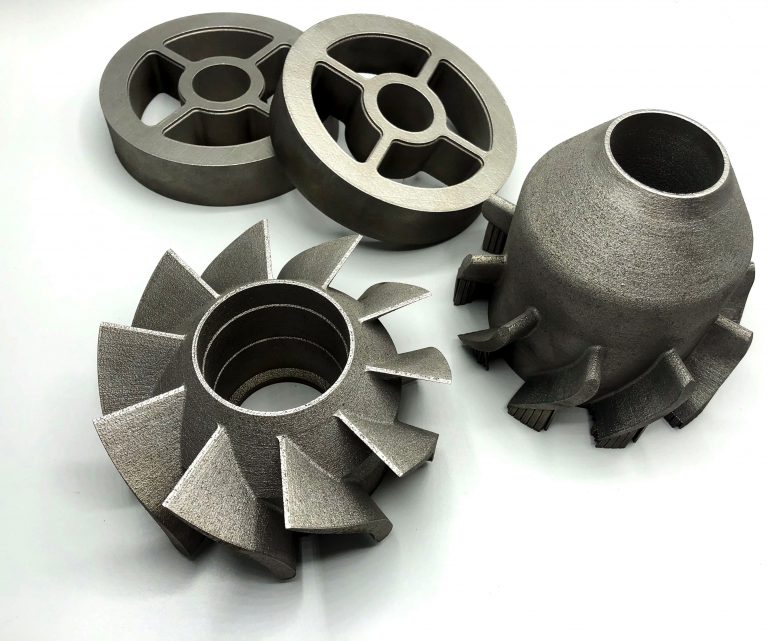
The key reason for using 3D printing in manufacturing clear aligners is the ability to customise them cost-effectively, since clear aligners are inherently individualised products.
One example of a company using 3D printing for clear aligners in Align Technology, the largest producer of clear aligners, well-known under the Invisalign brand. In 2019, the company has reportedly produced over half a million unique 3D-printed parts per day.
Given such volumes, it’s not a surprise that SmarTech Analysis, a leading 3D printing research firm, named clear aligners “the single highest volume application for 3D printing technologies in the world today.”
With the ever-growing capabilities of 3D printing, we expect that clear aligner companies will ultimately shift to direct 3D printing of aligners within the next five years.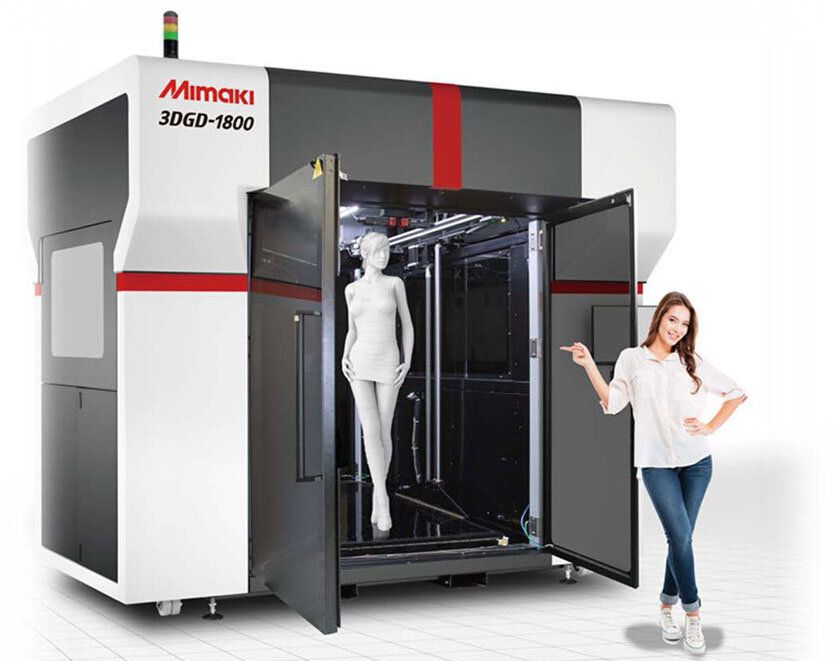
Digital dentistry
Digital dentistry - the introduction of digital technologies in dental practice - is transforming the dental sector. Traditional processes used to create dental impressions are gradually being replaced by digital technologies, with desktop 3D printing systems, 3D scanners and materials becoming more accessible.
By combining intraoral scanning and 3D printing, dental labs can create dental products like crowns, bridges and bite splints, that perfectly match a patient’s anatomy.
The rate of success in dental implantology can be also increased with the help of 3D printing, as custom dental surgical guides are produced. This improves the quality and accuracy of dental work. These surgical guides can be produced faster and more cheaply.
Formlabs, a manufacturer of SLA and SLS desktop machines, has estimated that over 50,000 surgeries have been performed using surgical guides made on its machines.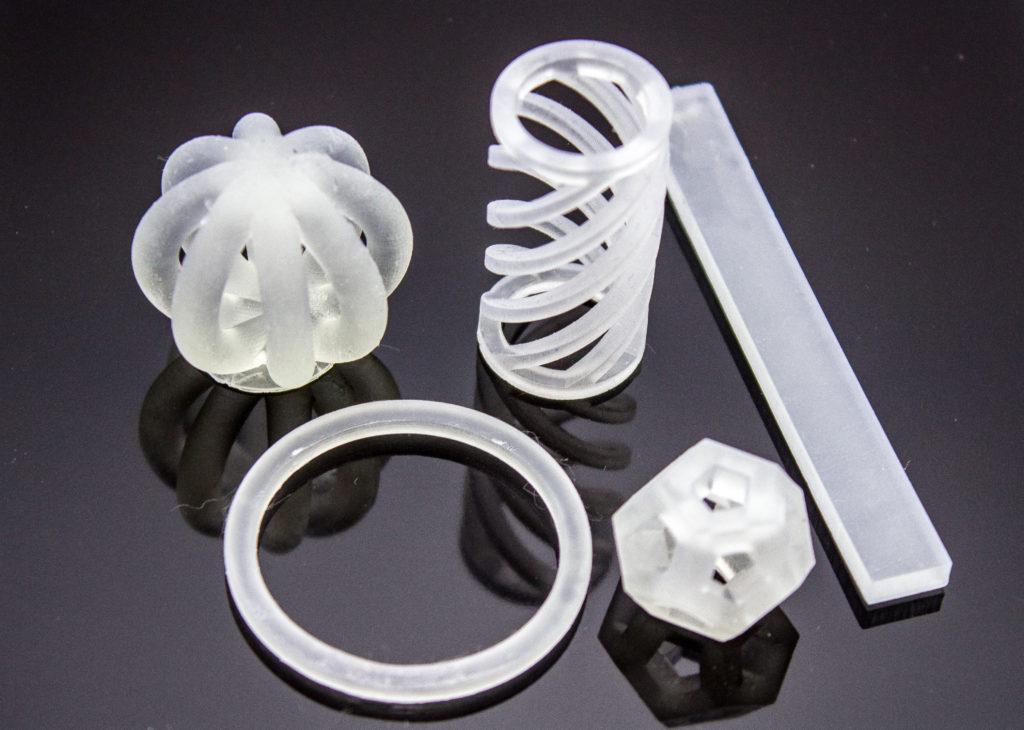
Spotlight: Lima Corporate
3D printing can be used to create custom prosthetic and orthopaedic devices from a number of certified biocompatible plastic or metal (e.g. titanium) materials.
When it comes to implants, 3D printing is currently being used to create hip and knee joint replacements, cranial reconstruction implants and spinal implants.
As of 2019, over 600,000 implants are estimated to be produced with the help of 3D printing. By 2027, this number is set to top 4 million.
One company specialising in 3D-printed implants is Lima Corporate. One of the pioneers of using 3D printing for orthopaedic products, the Italian company is currently using at least 15 metal 3D printers to produce parts like acetabular cups, which are essential parts of hip prostheses.
In one example, a mountaineer needing a hip replacement, received Lima’s hip implant featuring a 3D-printed acetabular cup.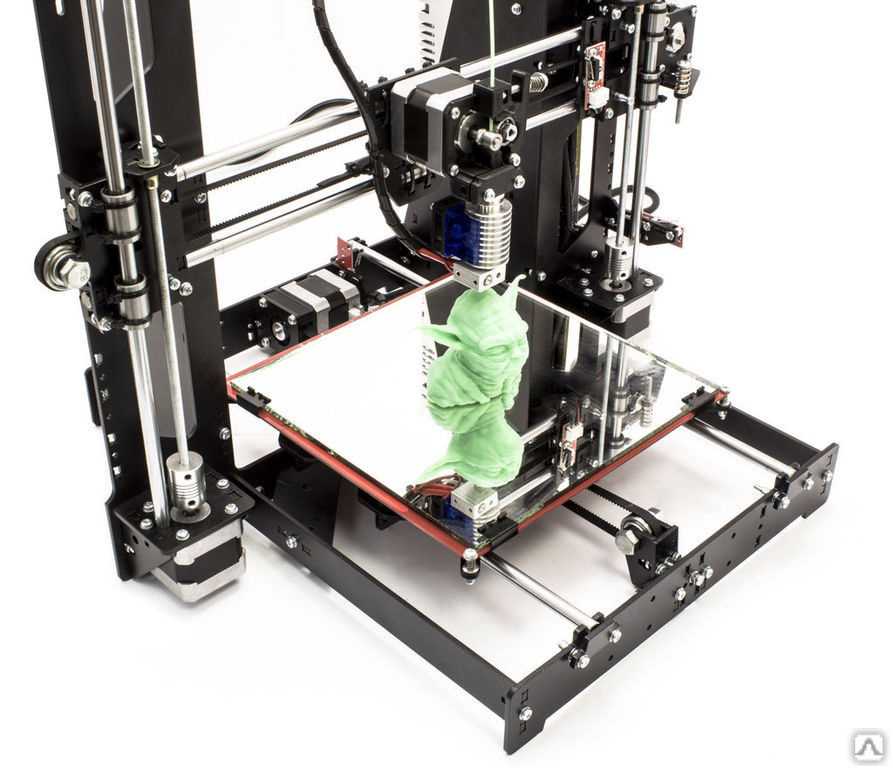 Thanks to 3D printing, it was possible to produce a cup that mimics the porous structure of natural bone, improving osseointegration, a process which allows an implant to become a permanent part of the body.
Thanks to 3D printing, it was possible to produce a cup that mimics the porous structure of natural bone, improving osseointegration, a process which allows an implant to become a permanent part of the body.
Ultimately, the patient was able to walk and climb again just after two and a half months after the implantation.
BioprintingSpotlight: Organovo
While 3D printing cannot yet be used to 3D print body parts, the technology can be used to create artificial living tissues that can mimic natural tissue characteristics.
Known as bioprinting, this technology is used for research and testing, with great potential for regenerative medicine. Instead of using plastics or metals, 3D bioprinters layer living cells, referred to as bio-ink, mimicking organ tissues.
3D bioprinting
is already being used to fabricate relatively simple artificial tissues and structures such as cartilage, skin, and bone, as well as blood vessels and cardiac patches.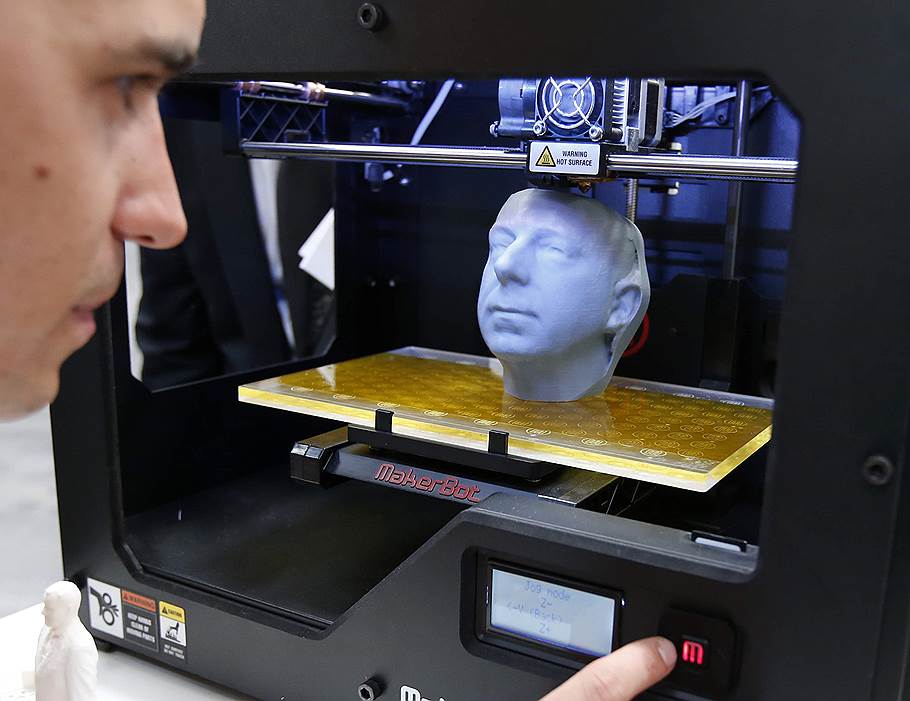
Organovo is a US-based medical laboratory and research company that is exploring the use of 3D printing to produce bioprinted tissue. Its bioprinting process turns cells taken from donor organs into bio-ink. These cells are then laid down layer-by-layer to build up small areas of tissue.
These 3D printed tissues could provide a better way to test new drugs and therapies, overcoming the need to test on animals or perform risky clinical trials.
Surgical planning and testingHospitals are increasingly incorporating 3D printing in their labs to create patient-specific anatomy models. Based on a patient’s MRI and CT scans, these models are usually created using full-colour 3D printing techniques like Material Jetting to ensure they remain highly precise and realistic.
Surgeons can then use these 3D-printed organ replicas to plan and practice a surgical operation prior to performing it. This approach has been proven to speed up procedures, improve surgical precision and minimise invasion.
This approach has been proven to speed up procedures, improve surgical precision and minimise invasion.
Currently, the medical and dental sector is estimated to represent 11% of the overall additive manufacturing market. The core strength of 3D printing for this sector is its ability to deliver on more personalised healthcare, in addition to opportunities to improve presurgical planning and drive device innovation.
However, for 3D printing to truly transform the medical and dental market, there are still key challenges that will need to be addressed, most notably the certification of 3D printing processes and devices.
With that said, current trends suggest that the use of 3D printing in medical and dental will continue to advance, paving the way for more advanced applications and new treatment solutions.
Related articles
CHAPTER 4
Consumer Goods
To remain competitive in an ever-changing market landscape, retailers and consumer-oriented industries must be able to adapt to evolving consumer demands and industrial trends in an agile way. Additive manufacturing meets these needs, providing a cost-effective approach to product development, testing and production. From consumer electronics to toys and sportswear, key players within the consumer goods industry are increasingly recognising 3D printing as a valuable addition to existing manufacturing solutions.
Additive manufacturing meets these needs, providing a cost-effective approach to product development, testing and production. From consumer electronics to toys and sportswear, key players within the consumer goods industry are increasingly recognising 3D printing as a valuable addition to existing manufacturing solutions.
Additionally, the recent growth of industrial desktop 3D printers has brought the technology closers to the hands of designers and engineers, accelerating the the opportunities of what can be achieved within the sector.
The Benefits of 3D Printing for Consumer Goods
Enhanced product development
Before any new product can be launched, its design must first be validated, tested and approved. This process happens during the product development stage. Prototypes and models are a vital aspect of this process, as they are commonly used for market research, testing and validation purposes.
Prototypes and models are a vital aspect of this process, as they are commonly used for market research, testing and validation purposes.
3D printing significantly speeds up this process by enabling the rapid production of prototypes and models. Using the technology, product designers and engineers are able to develop and test multiple iterations and perform repetitive testing in a much shorter time frame.
Faster time-to-market
The ability to accelerate product development times has a direct impact on speed to market. The case is simple: by being able to test and validate products faster, product designers and engineers companies can speed up their time-to-market.
Some companies have even gone one step further by 3D printing products for pilot product testing with consumers. In 2015, PepsiCo developed several prototypes of its Ruffles chips brand, subsequently testing the sizes with consumers to identify which was preferred. The most popular prototype was then used to create a new potato chip slicer at the PepsiCo manufacturing plants.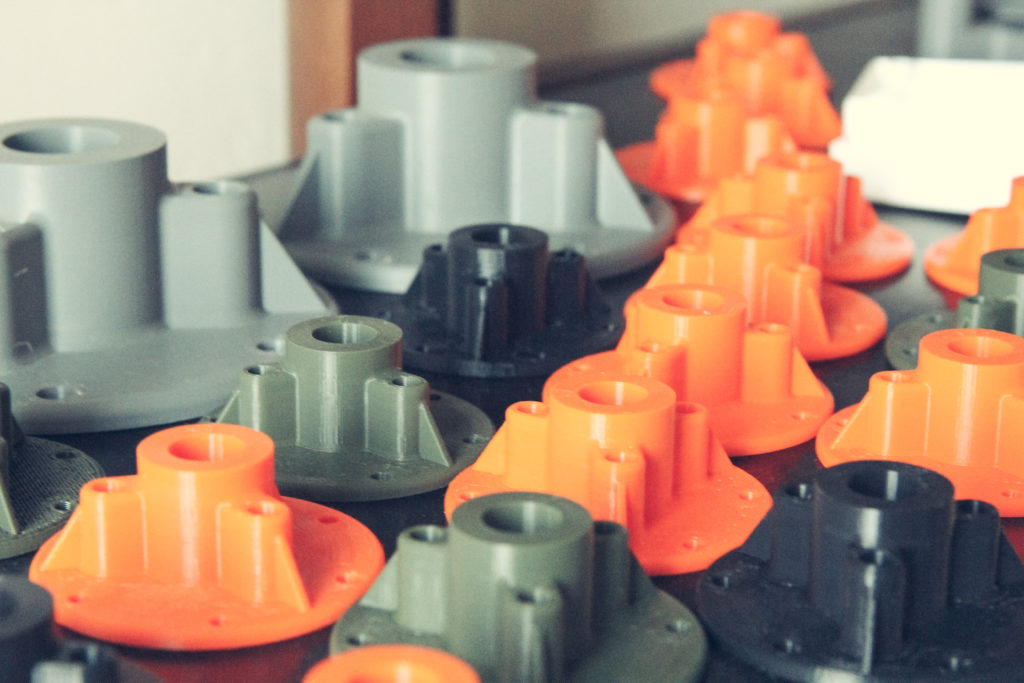
This application of 3D printing enabled PepsiCo to bring to market various flavours of its Ruffles brand much faster, with multiple flavours available in well over a dozen markets globally.
Mass customisation
Perhaps the biggest impact of 3D printing for consumer goods lies in the potential of creating personalised products, tailored to the requirements of consumers.
With traditional manufacturing, where products are typically made en masse, the production of customised products in small batches is highly inefficient and not cost-effective.
These limitations are eliminated with additive manufacturing — and companies are already taking advantage of the ability to provide a customised service to customers.
Consumer Goods Applications
Spotlight: Adidas
Footwear
Adidas, for example, 3D prints midsoles for its Futurecraft 4D sneakers, using Carbon’s proprietary Digital Light Synthesis™ technology. One of the key benefits of using 3D printing in this way is to improve shoe performance for various sports, thanks to the various properties of the midsole.
One of the key benefits of using 3D printing in this way is to improve shoe performance for various sports, thanks to the various properties of the midsole.
The one-of-a-kind design of a midsole, which features 20,000 struts for better cushioning, would be impossible to create with traditional techniques. With injection or compression moulding, for example, it would be virtually impossible to create midsoles with the variable properties needed — and require assembly.
Adidas's Futurecraft 4D sneakers [Image credit: Adidas]
Beauty & Cosmetics
Spotlight: Chanel
While 3D printing has historically been seen as the sole preserve of industrial manufacturing, the technology is also finding its way into the beauty industry.
French fashion company Chanel is one company demonstrating the potential of 3D printing, having launched the world’s first 3D-printed mascara brush in 2018.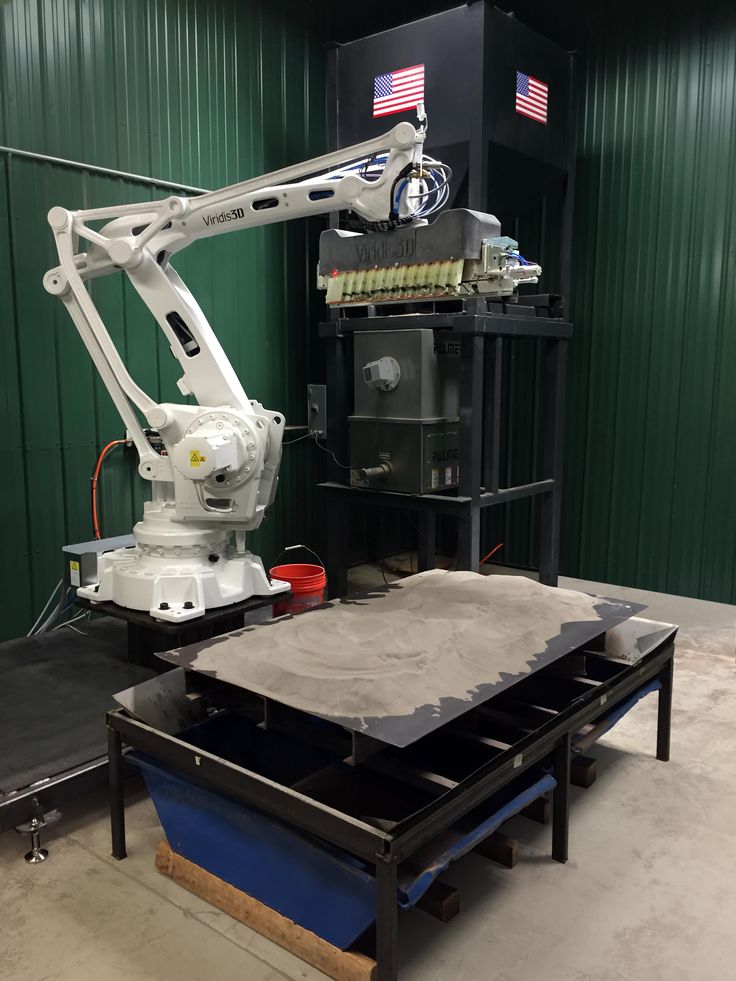 The Révolution Volume mascara brush was created using SLS, a technology that uses a laser beam to fuse layers of polyamide powder.
The Révolution Volume mascara brush was created using SLS, a technology that uses a laser beam to fuse layers of polyamide powder.
With 3D printing, the design of the brush has been optimised - for example, the rough, granular texture improves the adhesion of the mascara to the lashes.
Although 3D printing might be new to the cosmetics industry, pioneers like Chanel demonstrate show how the technology could transform the way cosmetic products are manufactured.
Image credit: Gillette
Jewellery
Spotlight: BOLTENSTERN
At first thought, jewellery may not seem to be an obvious application of additive manufacturing. However, the technology is benefiting jewellery makers in two ways. The first is by 3D printing investment casting patterns, which are cheaper and faster to produce than traditional methods.
A second approach is to 3D print jewellery directly using precious metals.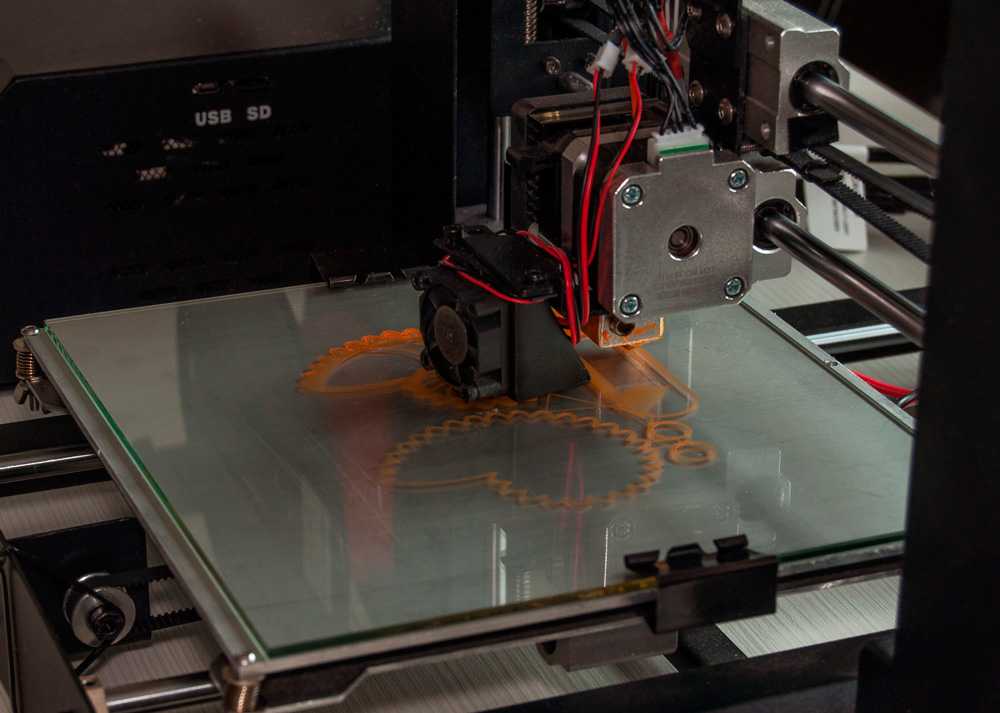 Both ways enable custom jewellery with thin walls and intricate details to be created which would be impossible to make through other means.
Both ways enable custom jewellery with thin walls and intricate details to be created which would be impossible to make through other means.
Austrian jewellery company BOLTENSTERN has used 3D printing to produce jewellery pieces such as bracelets, earrings, necklaces and cufflinks.
In partnership with COOKSONGOLD, a supplier of precious metal powders, BOLTERNSTERN used DMLS technology to create its “Embrace” jewellery collection. According to the jewellery maker, this is the first commercial collection on the market to be directly 3D printed in gold and platinum.
Featuring various shapes, including a start, cloud and flower, the technology made it easier to reach unprecendented levels of customisation and highly complex designs. The customisable nature of the collection means that customers can choose from a variety of combinations and variations.
Bikes
Spotlight: Arevo & Franco Bicycles
A handful of specialised bike manufacturers have started integrating 3D-printed components into their products.
For example, Franco Bicycles has launched a new line of eBikes, featuring a 3D-printed composite frame manufactured by California-based start-up, Arevo. Part of the Emery bike range, the frame is featured in the Emery ONE eBike, making it the world’s first bike with a 3D-printed frame.
One of the unique aspects behind the production of the 3D-printed carbon-fibre frame is that it was manufactured as a single part, as opposed to a multi-piece assembly that is typical for traditional bike frames. Enabling this is a proprietary robotic 3D printing process and patented generative design software, developed by a 3D printing company, Arevo.
Thanks to 3D printing, the lead time for the Emery ONE bike frame has been reduced from an 18 months cycle to just a few days. Additionally, the company was also able to significantly reduce product development costs.
When compared to pioneering industries like aerospace and medical, adoption of additive manufacturing within the consumer goods industry is still relatively young.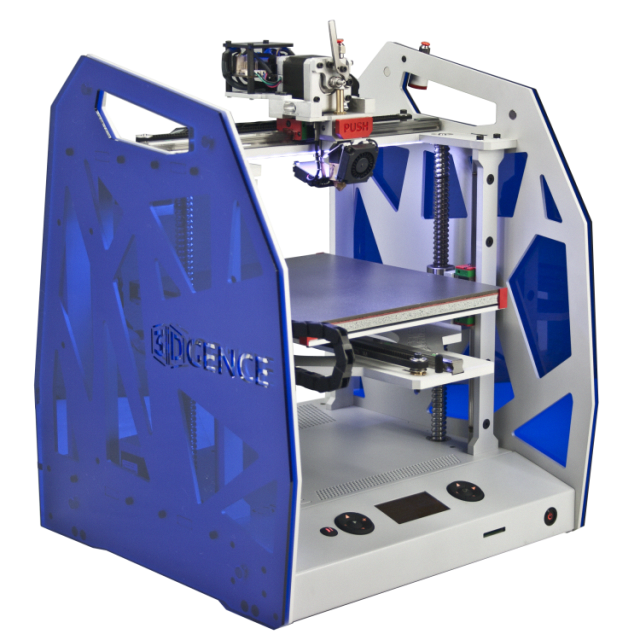 However, the benefits of greater customisation, faster time-to-market and product development are increasingly recognised by the industry.
However, the benefits of greater customisation, faster time-to-market and product development are increasingly recognised by the industry.
As additive manufacturing matures, we’ll likely see more consumer brands following the path of the industry’s early adopters, pushing the technology towards new applications and opportunities.
Related articles
CHAPTER 5
Industrial Goods
The industrial goods sector includes the production of machinery components, tooling and equipment used in the manufacture of other goods. With increasing production costs and the digitisation of manufacturing, industrial OEMs must constantly evolve to maintain operational agility and keep costs down. Manufacturers are therefore increasingly turning to 3D printing to stay agile, responsive, and innovative.
Key Benefits of 3D Printing for Industrial Goods
Design complexity
As we’ve seen in other industries, rapid prototyping is a key use case of 3D printing for the industrial goods sector.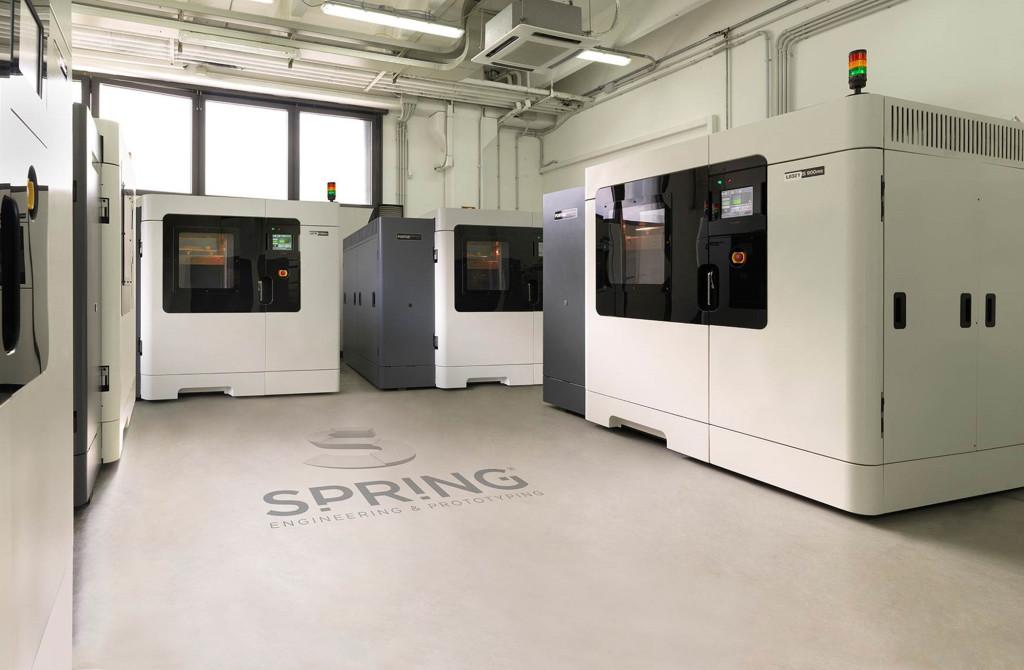 Design changes that would have taken months using conventional manufacturing methods can be implemented much faster, oftentimes in under a week, using 3D printing.
Design changes that would have taken months using conventional manufacturing methods can be implemented much faster, oftentimes in under a week, using 3D printing.
Shorter lead times
According to Sculpteo’s 2018 State of Industry report, 52% of those within the industrial goods sector favour 3D printing most for its ability to reduce lead times. Since 3D printing requires no tooling, manufacturers can reduce the time needed to produce parts, bypassing a time-consuming and costly tooling production step.
Design complexity
3D printing is a cost-effective technology for producing parts with complex geometries. Designs that would otherwise be impossible to produce with conventional manufacturing can now be produced with 3D printing.
On-demand production
Since 3D printing can produce physical parts from digital files in a matter of hours, companies can leverage a new model of manufacturing parts on demand.
Industrial Goods Applications
Spotlight: Bowman Additive Production
End-use parts
Major industrial goods companies are already investigating additive manufacturing as a mean sof producing end parts. For example, 3D printing is helping to transform the production of bearings at Bowman Additive Production, a leading UK bearings manufacturer.
Using HP’s Multi Jet Fusion technology and PA11 nylon material, Bowman has been able to manufacture its bespoke Rollertrain cage. The part indicates the complexity of the manufacturing process; it contains an interlocking structure that uses the rolling elements to pin together each section of the cage.
The result: bearings that possess a 70% increased load-bearing capacity and an increased working life of up to 500%.
Tooling
Spotlight: Eckhart and Wilson Tool International
The ability to 3D print manufacturing aids, such as jigs, gauges and fixtures, opens up a new range of possibilities for industrial goods manufacturers.
In addition to jigs and fixtures, 3D printing is revolutionising the production of hard tooling like moulds, used in injection moulding and die casting. Traditionally, moulds are CNC milled and may undergo multiple design iterations, taking weeks if not months, before the final design is achieved. This results in a process both time-consuming and very costly, with a considerable material waste.
Now, metal 3D printing technologies like DMLS or SLM can be used instead, allowing tool-making companies not only to reduce material waste but improve the functionality of a mould. This can be achieved by integrating more complex-shaped cooling channels within the design, substantially improving the cooling characteristics of a mould.
Eckhart, a company providing manufacturing solutions, has recently adopted 3D printing with the aim of replacing existing metal tools with 3D-printed equivalents. 3D printed tools offer multiple benefits, according to the company, including improved line of sight, lightweight components and improved design and ergonomics.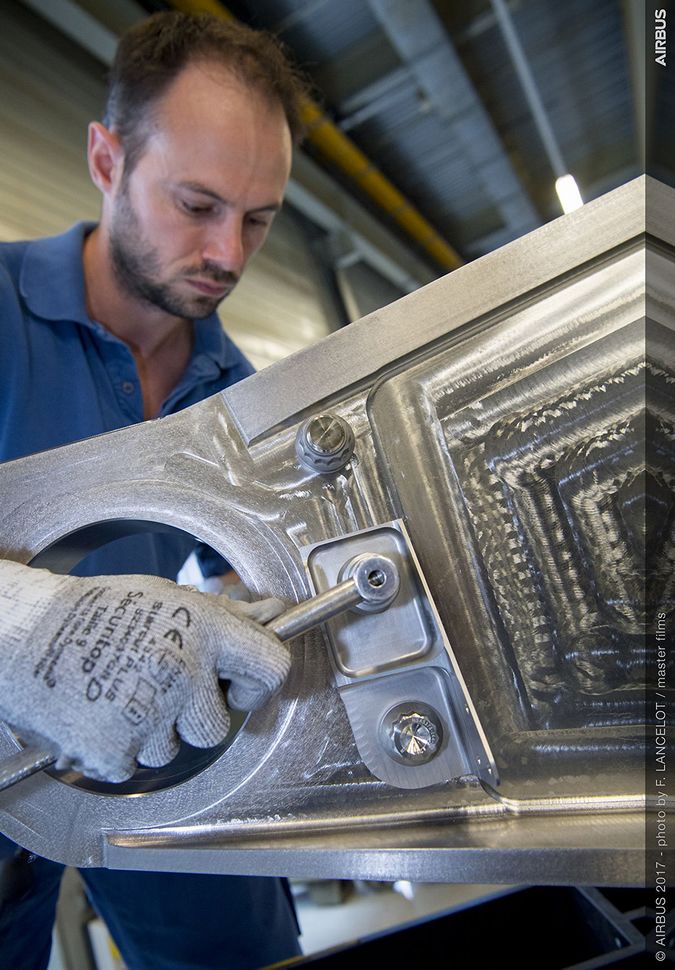
Wilson Tool International, the largest independent tooling manufacturer, is another company that has recognised the advantages of additive manufacturing for tooling, after launching its 3D printing division — Wilson Tool Additive — in late 2018. The AM division will see the company offering custom-made jigs, fixture and tooling equipment using FDM and vat polymerisation technologies. The benefits? Customers can expect to receive made-to-order bending tools and support parts in a matter of hours as opposed to days or weeks.
Spare parts
Spotlight: Siemens Mobility
Thanks to on-demand 3D printing, manufacturers can produce spare parts quickly and cost-effectively. This approach is beneficial, for example, when legacy equipment requires a replacement that may be out of production or difficult to procure. 3D printing spare parts at the point of need also can help reduce inventory, bypassing the costly storage of spare parts that have low demand.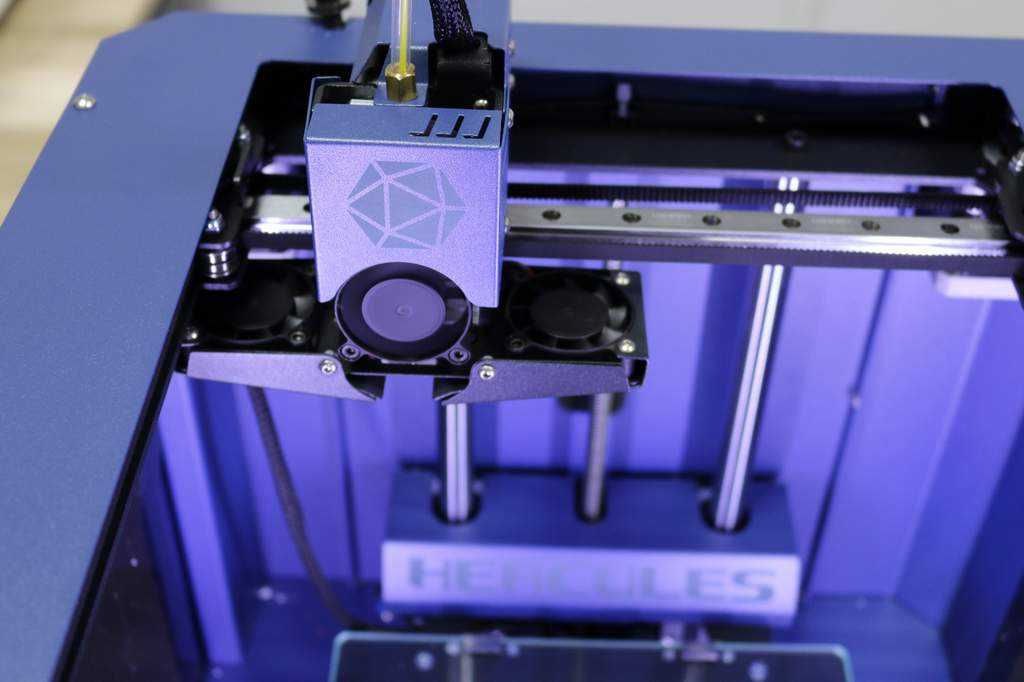
Siemens Mobility is one example of a company using 3D printing to manufacture spare parts and tooling on-demand at the Siemens Mobility RRX Rail Service Centre. With roughly 100 trains expected to enter the depot each month, 3D printing will play an important role in optimising spare part production.
The 3D-printed parts are said to reduce cost and lead-times from week to hours whilst also bringing greater operational agility.
For industrial manufacturers, 3D printing offers new ways to improve manufacturing processes, develop new business models and drive innovation.
While further advancements are still needed to accelerate adoption of the technology even further, such as process repeatability and part quality, as industrial AM capabilities continue to evolve, so to will the applications of the technology within the sector.
To prepare for this future, industrial OEMs must consider the need to implement an AM strategy for their organisations.
Related articles
CHAPTER 6
What is the Future of 3D Printing?
Throughout this guide, we’ve seen how 3D printing is moving beyond the boundaries of rapid prototyping. New possibilities for serial production and fully virtual inventories could soon become a reality.
New possibilities for serial production and fully virtual inventories could soon become a reality.
The industrial applications highlighted in this guide demonstrate the value of 3D printing to existing manufacturing workflows. While there are several drivers behind this transition, these can be broadly summarised into two groups:
Product Innovation: refers to the expanded design possibilities to create innovative new parts and products, including complex lattice structures and other geometries, lightweighting, customisation, part count reduction and multi-material 3D printing.
As of 2021, we’ve seen 3D printing making huge leaps forward, pointing to even more exciting opportunities on the horizon. As it stands, the potential of the technology is really only starting to be fully unlocked. However, as companies across industries move ever-more towards smarter, digital manufacturing, the relevance of industrial 3D printing will only continue to increase.
All about 3D printing. additive manufacturing. Basic concepts.
- 1 Technology
- 2 Terminology
- 3 Fundamentals
- 4 Printing Technologies
- 5 3D printers
- 6 Application
- 7 Domestic and hobby use
- 8 Clothing
- 9 3D bioprinting
- 10 3D printing of implants and medical devices
- 11 3D printing services
- 12 Research into new applications
- 13 Intellectual Property
- 14 Influence of 3D printing
- 15 Space research
- 16 Social change
- 17 Firearms
Technology
Charles Hull - the father of modern 3D printing
3D printing is based on the concept of building an object in successive layers that display the contours of the model. In fact, 3D printing is the complete opposite of traditional mechanical production and processing methods such as milling or cutting, where the appearance of the product is formed by removing excess material (so-called "subtractive manufacturing").
In fact, 3D printing is the complete opposite of traditional mechanical production and processing methods such as milling or cutting, where the appearance of the product is formed by removing excess material (so-called "subtractive manufacturing").
3D printers are computer-controlled machines that build parts in an additive way. Although 3D printing technology appeared in the 80s of the last century, 3D printers were widely used commercially only in the early 2010s. The first viable 3D printer was created by Charles Hull, one of the founders of 3D Systems Corporation. At the beginning of the 21st century, there was a significant increase in sales, which led to a sharp drop in the cost of devices. According to the consulting firm Wohlers Associates, the global market for 3D printers and related services reached $2.2 billion in 2012, growing by 29%.% compared to 2011.
3D printing technologies are used for prototyping and distributed manufacturing in architecture, construction, industrial design, automotive, aerospace, military-industrial, engineering and medical industries, bioengineering (to create artificial fabrics), fashion and footwear, jewelry, in education, geographic information systems, food industry and many other areas.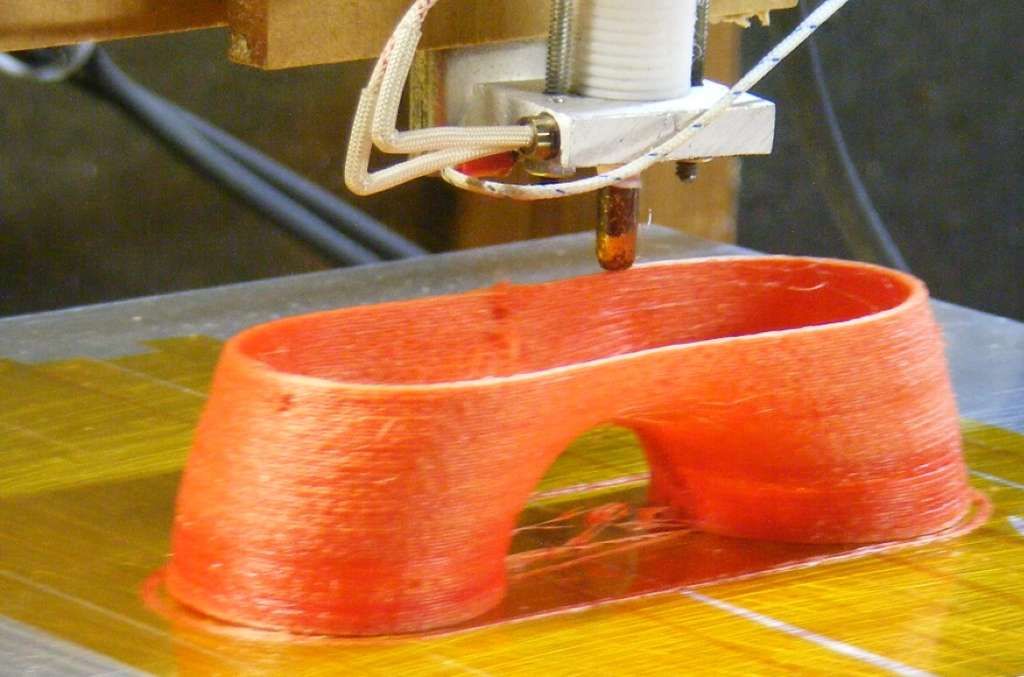 According to research, open source home 3D printers will allow you to win back the capital costs of your own purchase through the economy of household production of items.
According to research, open source home 3D printers will allow you to win back the capital costs of your own purchase through the economy of household production of items.
Terminology
Additive manufacturing involves the construction of objects by adding the necessary material, and not by removing excess, as is the case with subtractive methods
The term "additive manufacturing" refers to the technology of creating objects by applying successive layers material. Models made using the additive method can be used at any stage of production - both for the production of prototypes (so-called rapid prototyping) and as finished products themselves (so-called rapid production).
In manufacturing, especially machining, the term "subtractive" implies more traditional methods and is a retronym coined in recent years to distinguish between traditional methods and new additive methods.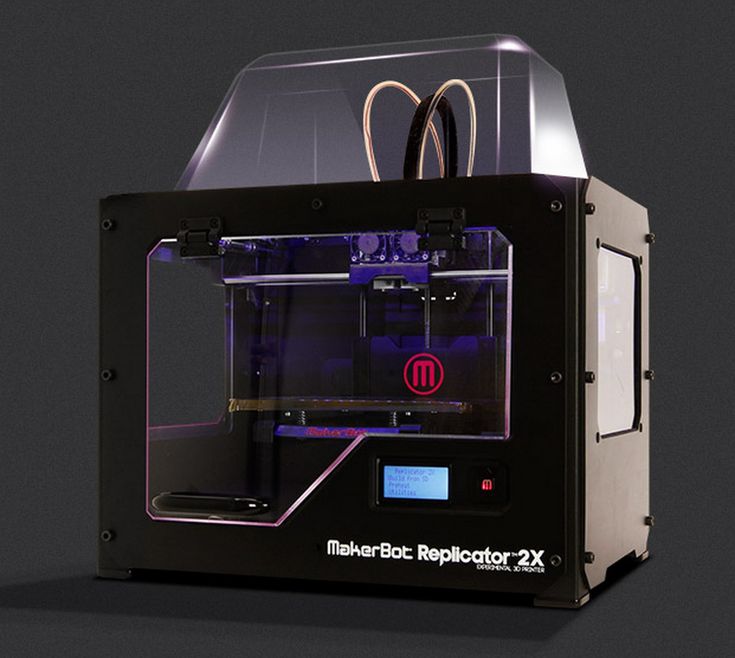 Although traditional manufacturing has used essentially "additive" methods for centuries (such as riveting, welding, and screwing), they lack a 3D information technology component. Machining, on the other hand, (the production of parts of an exact shape), as a rule, is based on subtractive methods - filing, milling, drilling and grinding.
Although traditional manufacturing has used essentially "additive" methods for centuries (such as riveting, welding, and screwing), they lack a 3D information technology component. Machining, on the other hand, (the production of parts of an exact shape), as a rule, is based on subtractive methods - filing, milling, drilling and grinding.
The term "stereolithography" was defined by Charles Hull in a 1984 patent as "a system for generating three-dimensional objects by layering".
Fundamentals
3D printed models
3D models are created by hand-held computer graphic design or 3D scanning. Hand modeling, or the preparation of geometric data for the creation of 3D computer graphics, is somewhat like sculpture. 3D scanning is the automatic collection and analysis of data from a real object, namely shape, color and other characteristics, with subsequent conversion into a digital three-dimensional model.
Both manual and automatic creation of 3D printed models can be difficult for the average user. In this regard, 3D printed marketplaces have become widespread in recent years. Some of the more popular examples include Shapeways, Thingiverse, and Threeding.
3D printing
The following digital models are used as drawings for 3D printed objects , powder, paper or sheet material, building a 3D model from a series of cross sections. These layers, corresponding to virtual cross-sections in the CAD model, are connected or fused together to create an object of a given shape. The main advantage of this method is the ability to create geometric shapes of almost unlimited complexity.
"Resolution" of the printer means the thickness of the applied layers (Z-axis) and the accuracy of positioning the print head in the horizontal plane (along the X and Y axes). Resolution is measured in DPI (dots per inch) or micrometers (the obsolete term is "micron").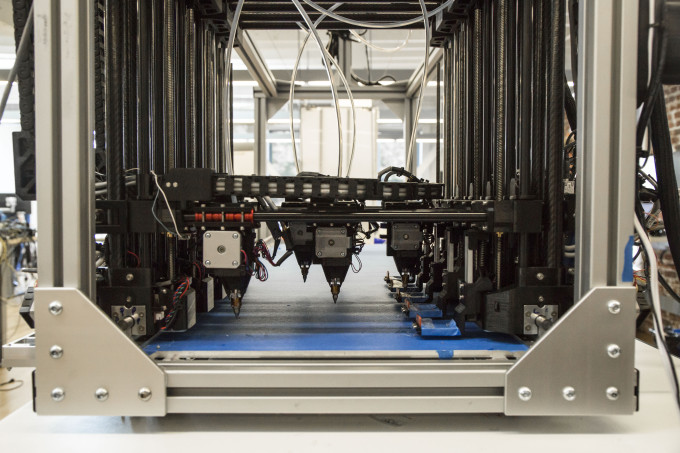 Typical layer thicknesses are 100µm (250 DPI), although some devices like the Objet Connex and 3D Systems ProJet are capable of printing layers as thin as 16µm (1600 DPI). The resolution on the X and Y axes is similar to that of conventional 2D laser printers. A typical particle size is about 50-100µm (510 to 250 DPI) in diameter.
Typical layer thicknesses are 100µm (250 DPI), although some devices like the Objet Connex and 3D Systems ProJet are capable of printing layers as thin as 16µm (1600 DPI). The resolution on the X and Y axes is similar to that of conventional 2D laser printers. A typical particle size is about 50-100µm (510 to 250 DPI) in diameter.
One of the methods for obtaining a digital model is 3D scanning. Pictured here is a MakerBot Digitizer
3D Scanner Building a model using modern technology takes hours to days, depending on the method used and the size and complexity of the model. Industrial additive systems can typically reduce the time to a few hours, but it all depends on the type of plant, as well as the size and number of models produced at the same time.
Traditional manufacturing methods such as injection molding can be less expensive when producing large batches of polymer products, but additive manufacturing has advantages in small batch production, allowing for higher production rates and design flexibility, along with increased cost per unit produced. In addition, desktop 3D printers allow designers and developers to create concept models and prototypes without leaving the office.
In addition, desktop 3D printers allow designers and developers to create concept models and prototypes without leaving the office.
Machining
FDM Type 3D Printers
Although the resolution of the printers is adequate for most projects, printing slightly oversized objects and then subtractively machining them with high-precision tools allows you to create models of increased accuracy.
The LUMEX Avance-25 is an example of devices with a similar combined manufacturing and processing method. Some additive manufacturing methods allow for the use of multiple materials, as well as different colors, within a single production run. Many of the 3D printers use "supports" or "supports" during printing. Supports are needed to build model fragments that are not in contact with the underlying layers or the working platform. The supports themselves are not part of the given model, and upon completion of printing, they either break off (in the case of using the same material as for printing the model itself), or dissolve (usually in water or acetone - depending on the material used to create the supports). ).
).
Printing technologies
Since the late 1970s, several 3D printing methods have come into being. The first printers were large, expensive and very limited.
Complete skull with supports not yet removed
A wide variety of additive manufacturing methods are now available. The main differences are in the layering method and consumables used. Some methods rely on melting or softening materials to create layers: these include selective laser sintering (SLS), selective laser melting (SLM), direct metal laser sintering (DMLS), fusing deposition printing (FDM or FFF). Another trend has been the production of solid models by polymerization of liquid materials, known as stereolithography (SLA).
In the case of lamination of sheet materials (LOM), thin layers of material are cut to the required contour, and then joined into a single whole. Paper, polymers and metals can be used as LOM materials. Each of these methods has its own advantages and disadvantages, which is why some companies offer a choice of consumables for building a model - polymer or powder. LOM printers often use regular office paper to build durable prototypes. The key points when choosing the right device are the speed of printing, the price of a 3D printer, the cost of printed prototypes, as well as the cost and range of compatible consumables.
Each of these methods has its own advantages and disadvantages, which is why some companies offer a choice of consumables for building a model - polymer or powder. LOM printers often use regular office paper to build durable prototypes. The key points when choosing the right device are the speed of printing, the price of a 3D printer, the cost of printed prototypes, as well as the cost and range of compatible consumables.
Printers that produce full-fledged metal models are quite expensive, but it is possible to use less expensive devices for the production of molds and subsequent casting of metal parts.
The main methods of additive manufacturing are presented in the table:
| | ||
| Method | Technology | Materials used |
| Extrusion | Fused deposition modeling (FDM or FFF) | Thermoplastics (such as polylactide (PLA), acrylonitrile butadiene styrene (ABS), etc. ) ) |
| Wire | Manufacture of arbitrary shapes by electron beam fusing (EBFȝ) | Virtually all metal alloys |
| Powder | Direct Metal Laser Sintering (DMLS) | Virtually all metal alloys |
| Electron Beam Melting (EBM) | Titanium alloys | |
| Selective laser melting (SLM) | Titanium alloys, cobalt-chromium alloys, stainless steel, aluminum | |
| Selective heat sintering (SHS) | Powder thermoplastics | |
| Selective laser sintering (SLS) | Thermoplastics, metal powders, ceramic powders | |
| Inkjet | 3D Inkjet Printing (3DP) | Gypsum, plastics, metal powders, sand mixtures |
| Lamination | Lamination Object Manufacturing (LOM) | Paper, metal foil, plastic film |
| Polymerization | Stereolithography (SLA) | Photopolymers |
| Digital LED Projection (DLP) | Photopolymers |
Extrusion Printing
Fused Deposition Modeling (FDM/FFF) was developed by S.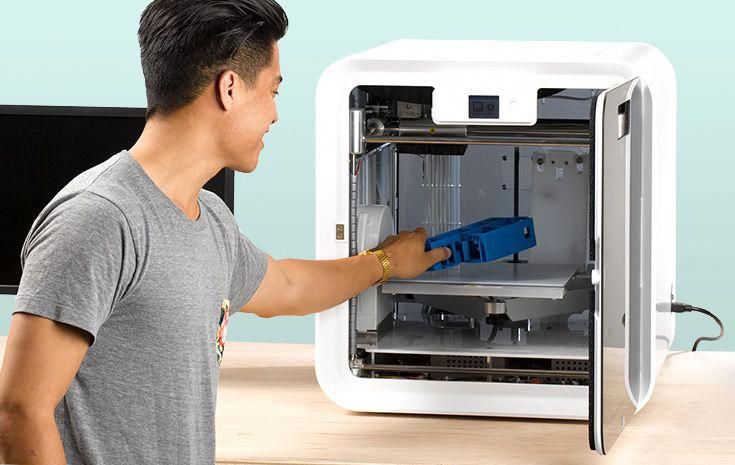 Scott Trump in the late 1980s and commercialized in the 1990s by Stratasys, a company of which Trump is credited as one of the founders. Due to the expiration of the patent, there is a large community of open source 3D printer developers as well as commercial organizations using the technology. As a consequence, the cost of devices has decreased by two orders of magnitude since the invention of the technology.
Scott Trump in the late 1980s and commercialized in the 1990s by Stratasys, a company of which Trump is credited as one of the founders. Due to the expiration of the patent, there is a large community of open source 3D printer developers as well as commercial organizations using the technology. As a consequence, the cost of devices has decreased by two orders of magnitude since the invention of the technology.
3D printers range from simple do-it-yourself printers to plastic...
Fusion printing process involves the creation of layers by extrusion of a fast-curing material in the form of microdrops or thin jets. Typically, consumable material (such as thermoplastic) comes in the form of spools from which the material is fed into a printhead called an "extruder". The extruder heats the material to its melting temperature, followed by extrusion of the molten mass through a nozzle. The extruder itself is driven by stepper motors or servomotors to position the print head in three planes. The movement of the extruder is controlled by a manufacturing software (CAM) linked to a microcontroller.
The movement of the extruder is controlled by a manufacturing software (CAM) linked to a microcontroller.
A variety of polymers are used as consumables, including acrylonitrile butadiene styrene (ABS), polycarbonate (PC), polylactide (PLA), high pressure polyethylene (HDPE), polycarbonate-ABS blends, polyphenylene sulfone (PPSU), etc. Typically, polymer supplied in the form of a filler made of pure plastic. There are several projects in the 3D printing enthusiast community that aim to recycle used plastic into materials for 3D printing. The projects are based on the production of consumables using shredders and melters.
FDM/FFF technology has certain limitations on the complexity of the generated geometric shapes. For example, the creation of suspended structures (such as stalactites) is impossible by itself, due to the lack of necessary support. This limitation is compensated by the creation of temporary support structures that are removed after printing is completed.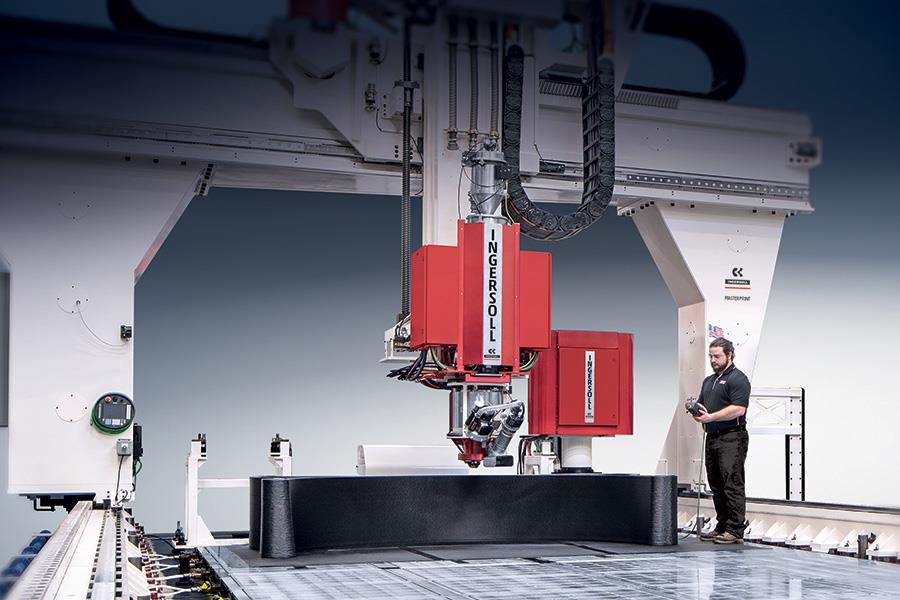
Powder print
Selective sintering of powder materials is one of the additive manufacturing methods. Model layers are drawn (sintered) in a thin layer of powdered material, after which the work platform is lowered and a new layer of powder is applied. The process is repeated until a complete model is obtained. The unused material remains in the working chamber and serves to support the overhanging layers without requiring the creation of special supports.
The most common methods are based on laser sintering: selective laser sintering (SLS) for working with metals and polymers (e.g. polyamide (PA), glass fiber reinforced polyamide (PA-GF), glass fiber (GF), polyetheretherketone) (PEEK), polystyrene (PS), alumide, carbon fiber reinforced polyamide (Carbonmide), elastomers) and direct metal laser sintering (DMLS).
... to expensive industrial plants working with metals
Selective Laser Sintering (SLS) was developed and patented by Carl Deckard and Joseph Beeman of the University of Texas at Austin in the mid-1080s under the auspices of the Defense Advanced Research Projects Agency (DARPA).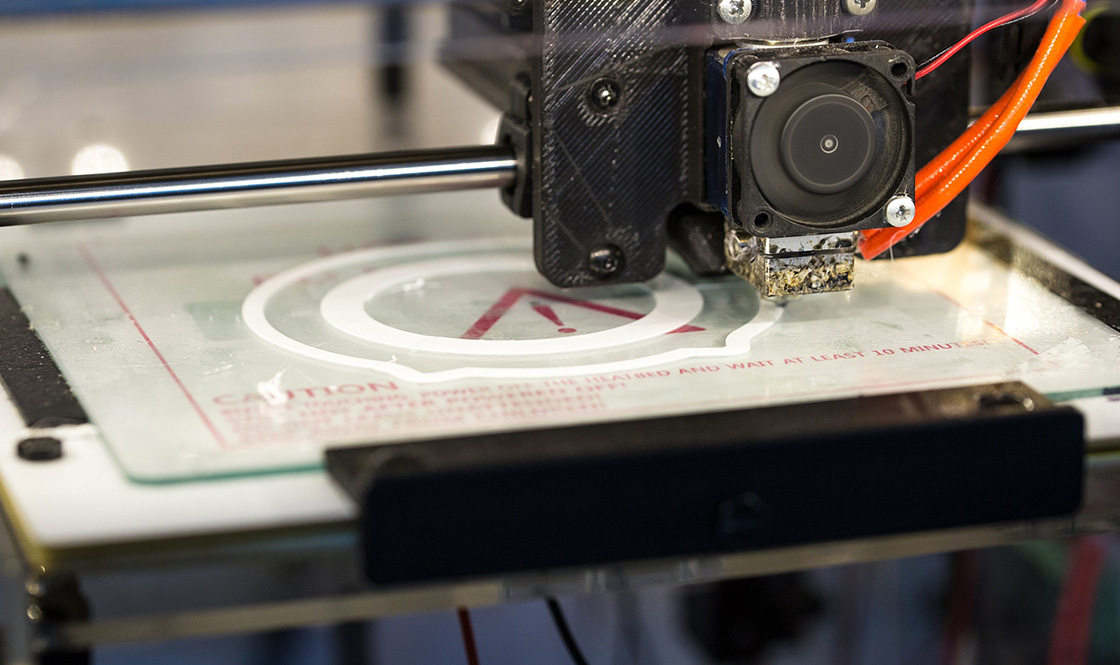 A similar method was patented by R. F. Householder in 1979, but has not been commercialized.
A similar method was patented by R. F. Householder in 1979, but has not been commercialized.
Selective laser melting (SLM) is characterized by the fact that it does not sinter, but actually melts the powder at the points of contact with a powerful laser beam, allowing you to create high-density materials that are similar in terms of mechanical characteristics to products made by traditional methods.
Electron Beam Melting (EBM) is a similar method for the additive manufacturing of metal parts (eg titanium alloys) but using electron beams instead of lasers. EBM is based on melting metal powders layer by layer in a vacuum chamber. In contrast to sintering at temperatures below melting thresholds, models made by electron beam melting are characterized by solidity with a corresponding high strength.
Finally, there is the 3D inkjet printing method. In this case, a binder is applied to thin layers of powder (gypsum or plastic) in accordance with the contours of successive layers of the digital model.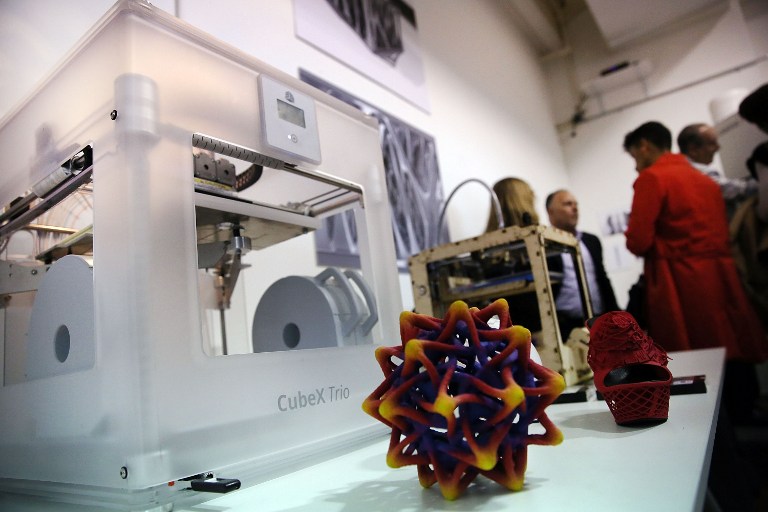 The process is repeated until the finished model is obtained. The technology provides a wide range of applications, including the creation of color models, suspended structures, the use of elastomers. The design of models can be strengthened by subsequent impregnation with wax or polymers.
The process is repeated until the finished model is obtained. The technology provides a wide range of applications, including the creation of color models, suspended structures, the use of elastomers. The design of models can be strengthened by subsequent impregnation with wax or polymers.
Lamination
FDM 3D printers are the most popular among hobbyists and enthusiasts
Some printers use paper as a material for building models, thereby reducing the cost of printing. Such devices experienced the peak of popularity in the 1990s. The technology consists in cutting out the layers of the model from paper using a carbon dioxide laser with simultaneous lamination of the contours to form the finished product.
In 2005, Mcor Technologies Ltd developed a variant of the technology that uses plain office paper, a tungsten carbide blade instead of a laser, and selective adhesive application.
There are also device variants that laminate thin metal and plastic sheets.
Photopolymerization
3D printing allows you to create functional monolithic parts of complex geometric shapes, like this jet nozzle
Stereolithography technology was patented by Charles Hull in 1986. Photopolymerization is primarily used in stereolithography (SLA) to create solid objects from liquid materials. This method differs significantly from previous attempts, from the sculptural portraits of François Willem (1830-1905) to photopolymerization by the Matsubara method (1974).
The Digital Projection Method (DLP) uses liquid photopolymer resins that are cured by exposure to ultraviolet light emitted from digital projectors in a coated working chamber. After the material has hardened, the working platform is immersed to a depth equal to the thickness of one layer, and the liquid polymer is irradiated again. The procedure is repeated until the completion of the model building. An example of a rapid prototyping system using digital LED projectors is the EnvisionTEC Perfactory.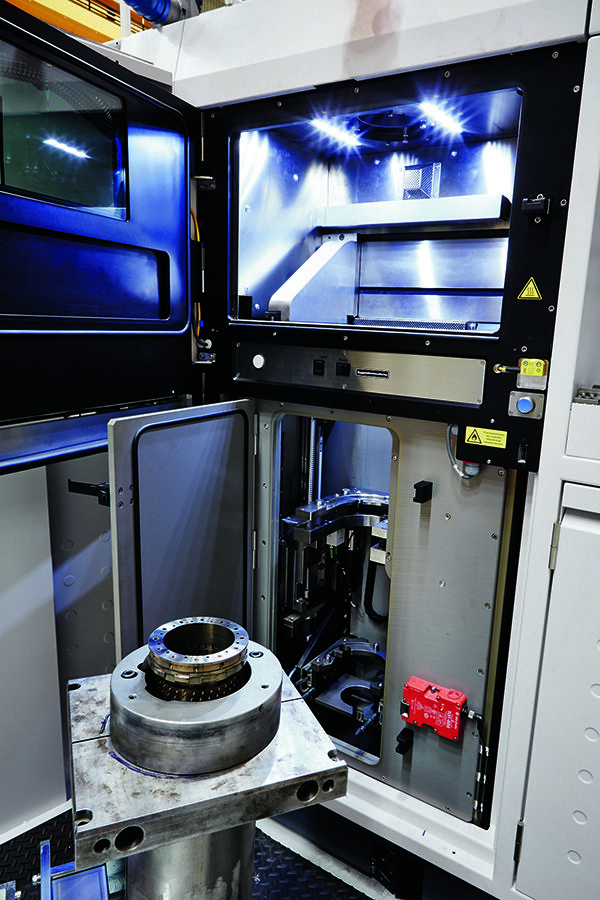
Inkjet printers (eg Objet PolyJet) spray thin layers (16-30µm) of photopolymer onto the build platform until a complete model is obtained. Each layer is irradiated with an ultraviolet beam until hardened. The result is a model ready for immediate use. The gel-like support material used to support the components of geometrically complex models is removed after the model has been handcrafted and washed. The technology allows the use of elastomers.
Ultra-precise detailing of models can be achieved using multiphoton polymerization. This method is reduced to drawing the contours of a three-dimensional object with a focused laser beam. Due to non-linear photoexcitation, the material solidifies only at the focusing points of the laser beam. This method makes it easy to achieve resolutions above 100 µm, as well as build complex structures with moving and interacting parts.
Another popular method is curing with LED projectors or "projection stereolithography".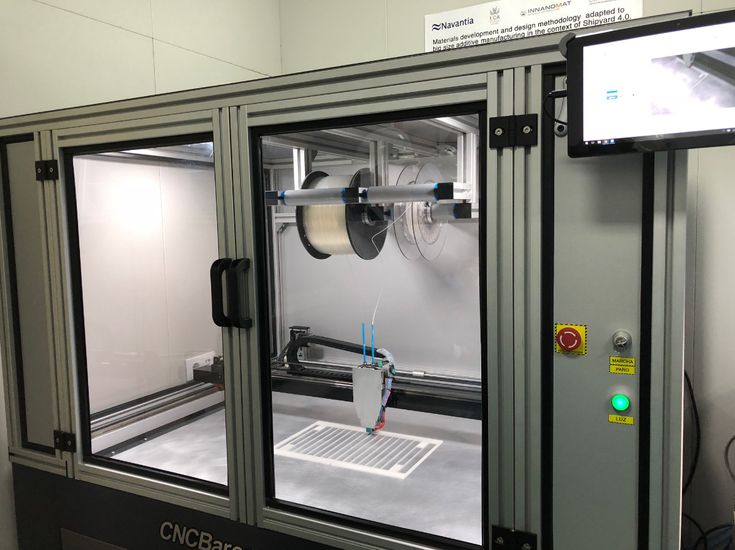
Projection stereolithography
This method involves dividing a 3D digital model into horizontal layers, converting each layer into a 2D projection similar to photomasks. The 2D images are projected onto successive layers of photopolymer resin that harden according to the projected contours.
In some systems, the projectors are located at the bottom, helping to level the surface of the photopolymer material when the model moves vertically (in this case, the build platform with the applied layers moves up, rather than sinking into the material) and reduces the production cycle to minutes instead of hours.
The technology allows you to create models with layers of several materials with different curing rates.
Some commercial models, such as the Objet Connex, apply resin using small nozzles.
3D printers
Industrial plants
Industrial adoption of additive manufacturing is proceeding at a rapid pace. For example, US-Israeli joint venture Stratasys supplies $2,000 to $500,000 additive manufacturing machines, while General Electric uses high-end machines to produce gas turbine parts.
For example, US-Israeli joint venture Stratasys supplies $2,000 to $500,000 additive manufacturing machines, while General Electric uses high-end machines to produce gas turbine parts.
Home appliances
LOM takes papier-mâché to the next level The development of 3D printers for home use is being pursued by a growing number of companies and enthusiasts. Most of the work is done by amateurs for their own and public needs, with help from the academic community and hackers.
The oldest and longest running project in the desktop 3D printer category is RepRap. The RepRap project aims to create free and open source (FOSH) 3D printers provided under the GNU General Public License. RepRap devices are capable of printing custom-designed plastic components that can be used to build clones of the original device. Individual RepRap devices have been successfully applied to the production of printed circuit boards and metal parts.
Due to the open access to drawings of RepRap printers, many of the projects adopt the technical solutions of analogues, thus creating a semblance of an ecosystem consisting mostly of freely modifiable devices.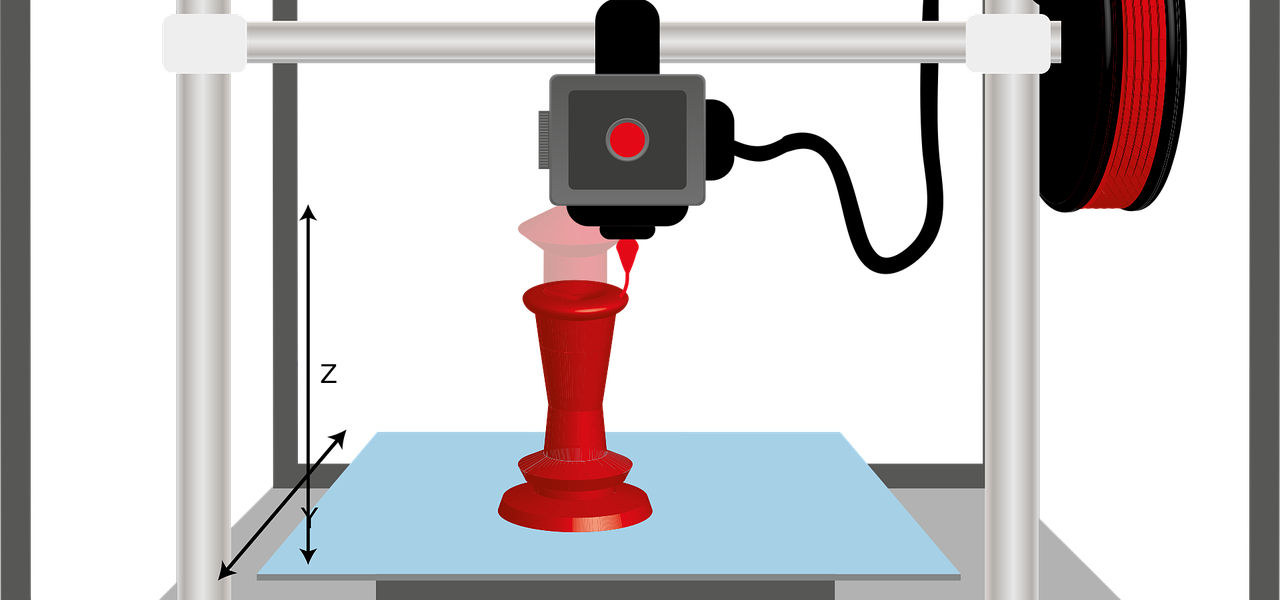 The wide availability of open source designs only encourages variations. On the other hand, there is a significant variation in the level of quality and complexity of both the designs themselves and the devices manufactured on their basis. The rapid development of open source 3D printers is leading to a rise in popularity and the emergence of public and commercial portals (such as Thingiverse or Cubify) offering a variety of printable 3D designs. In addition, the development of technology contributes to the sustainable development of local economies through the possibility of using locally available materials for the production of printers.
The wide availability of open source designs only encourages variations. On the other hand, there is a significant variation in the level of quality and complexity of both the designs themselves and the devices manufactured on their basis. The rapid development of open source 3D printers is leading to a rise in popularity and the emergence of public and commercial portals (such as Thingiverse or Cubify) offering a variety of printable 3D designs. In addition, the development of technology contributes to the sustainable development of local economies through the possibility of using locally available materials for the production of printers.
Stereolithographic 3D printers are often used in dental prosthetics
The cost of 3D printers has been declining at a significant rate since about 2010: devices that cost $20,000 at the time are now $1,000 or less. Many companies and individual developers are already offering budget RepRap kits under $500. The Fab@Home open source project has led to the development of general purpose printers capable of printing anything that can be squeezed through a nozzle, from chocolate to silicone putty and chemicals.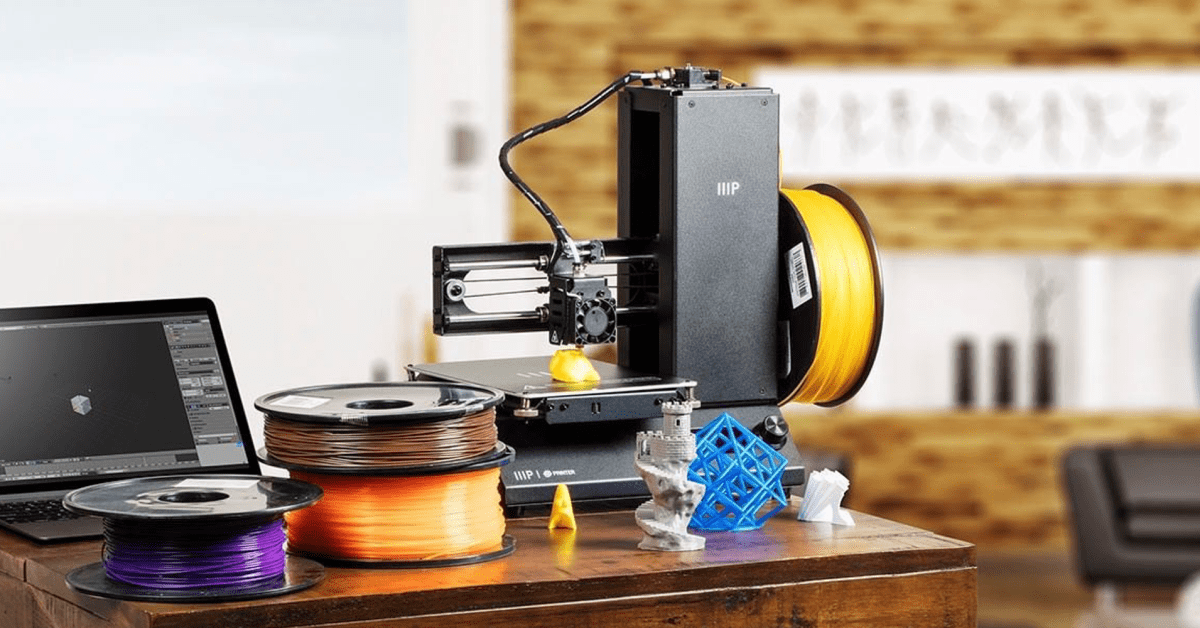
Printers based on this design have been available as kits since 2012 for around $2,000. Some 3D printers, including the mUVe 3D and Lumifold, are designed to be as affordable as possible from the start, with the Peachy Printer being priced around $100. .
Professional Kickstarter funded printers often perform well: Rapide 3D printers are quiet and fumes free at $1499. 3D Doodler's '3D Printing Pen' Raised $2.3M in Kickstarter donations, with a selling price of $99 for the device itself. True, it is difficult to call the 3D Doodler a full-fledged 3D printer.
3D Systems Cube is a popular consumer 3D printer
As prices drop, 3D printers are becoming more attractive for home production. In addition, home use of 3D printing technologies can reduce the environmental footprint of industry by reducing the volume of consumables and the energy and fuel costs of transporting materials and goods.
Parallel to the creation of home 3D-printing devices, the development of devices for processing household waste into printed materials, the so-called. Recyclebot. For example, the commercial model Filastrucer was designed to recycle plastic waste (shampoo bottles, milk containers) into inexpensive consumables for RepRap printers. Such methods of household disposal are not only practical, but also have a positive impact on the ecological situation.
Recyclebot. For example, the commercial model Filastrucer was designed to recycle plastic waste (shampoo bottles, milk containers) into inexpensive consumables for RepRap printers. Such methods of household disposal are not only practical, but also have a positive impact on the ecological situation.
The development and customization of RepRap 3D printers has created a new category of semi-professional printers for small businesses. Manufacturers such as Solidoodle, RoBo and RepRapPro offer kits for under $1,000. The accuracy of these devices is between industrial and consumer printers. Recently, high-performance printers using a delta-shaped coordinate system, or the so-called "delta robots", are gaining popularity. Some companies offer software to support printers made by other companies.
Application
The use of LED projectors helps reduce the cost of stereolithography printers. In the illustration DLP printer Nova
3D printing allows you to equalize the cost of producing one part and mass production, which poses a threat to large-scale economies. The impact of 3D printing may be similar to the introduction of manufacture. In the 1450s, no one could predict the consequences of the printing press, in the 1750s, no one took the steam engine seriously, and transistors 19The 50s seemed like a curious innovation. But the technology continues to evolve and is likely to have an impact on every scientific and industrial branch with which it comes into contact.
The impact of 3D printing may be similar to the introduction of manufacture. In the 1450s, no one could predict the consequences of the printing press, in the 1750s, no one took the steam engine seriously, and transistors 19The 50s seemed like a curious innovation. But the technology continues to evolve and is likely to have an impact on every scientific and industrial branch with which it comes into contact.
The earliest application of additive manufacturing can be considered rapid prototyping, aimed at reducing the development time of new parts and devices compared to earlier subtractive methods (too slow and expensive). The improvement of additive manufacturing technologies leads to their spread in various fields of science and industry. The production of parts previously only available through machining is now possible through additive methods, and at a better price.
Applications include breadboarding, prototyping, molding, architecture, education, mapping, healthcare, retail, etc.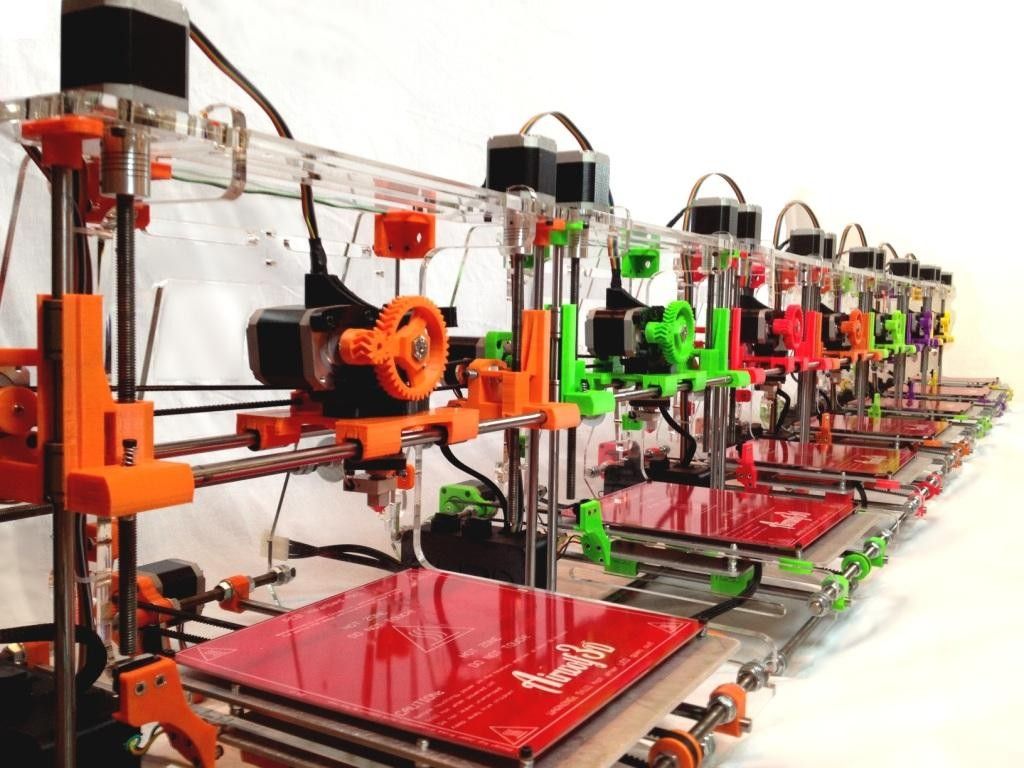
Industrial applications:
Rapid prototyping: Industrial 3D printers have been used for rapid prototyping and research since the early 1980s . As a rule, these are quite large installations using powder metals, sand mixtures, plastics and paper. Such devices are often used by universities and commercial companies.
Advances in rapid prototyping have led to the creation of materials suitable for the production of final products, which in turn has contributed to the development of 3D production of finished products as an alternative to traditional methods. One of the advantages of fast production is the relatively low cost of manufacturing small batches.
Rapid production: Rapid production remains a fairly new method whose possibilities have not yet been fully explored. Nevertheless, many experts tend to consider rapid production a new level of technology. Some of the most promising areas for rapid prototyping to adapt to rapid manufacturing are selective laser sintering (SLS) and direct metal sintering (DMLS).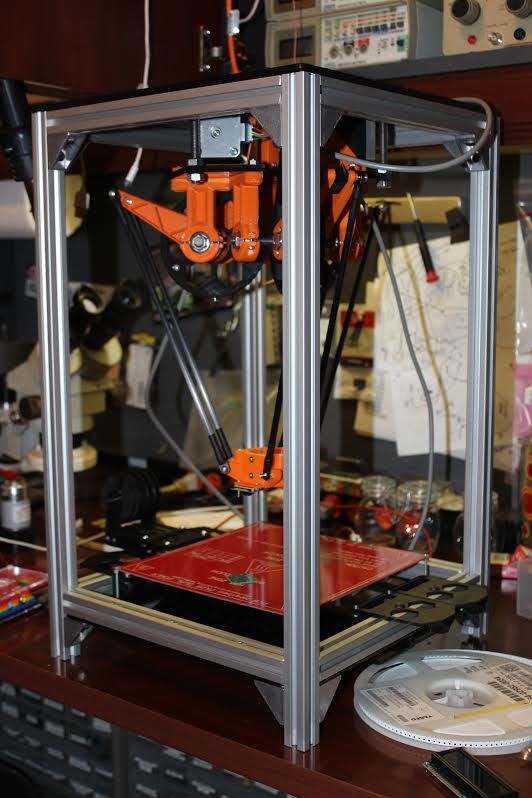
Bulk customization: Some companies offer services for customizing objects using simplified software and then creating unique custom 3D models. One of the most popular areas was the manufacture of cell phone cases. In particular, Nokia has made publicly available the designs of its phone cases for user customization and 3D printing.
Mass production: The current low print speed of 3D printers limits their use in mass production. To combat this shortcoming, some FDM devices are equipped with multiple extruders, allowing you to print different colors, different polymers, and even create several models at the same time. In general, this approach increases productivity without requiring the use of multiple printers - a single microcontroller is enough to operate multiple printheads.
Devices with multiple extruders allow the creation of several identical objects from only one digital model, but at the same time allow the use of different materials and colors. The print speed increases in proportion to the number of print heads. In addition, certain energy savings are achieved through the use of a common working chamber, which often requires heating. Together, these two points reduce the cost of the process.
The print speed increases in proportion to the number of print heads. In addition, certain energy savings are achieved through the use of a common working chamber, which often requires heating. Together, these two points reduce the cost of the process.
Many printers are equipped with dual printheads, however this configuration is only used for printing single models in different colors and materials.
Consumer and hobby use
Today, consumer 3D printing mainly attracts the attention of enthusiasts and hobbyists, while practical use is rather limited. However, 3D printers have already been used to print working mechanical clocks, woodworking gears, jewelry, and more. Home 3D printing websites often offer designs for hooks, doorknobs, massage tools, and more.
3D printing is also being used in hobby veterinary medicine and zoology – in 2013, a 3D printed prosthesis allowed a duckling to stand up, and hermit crabs love stylish 3D printed shells.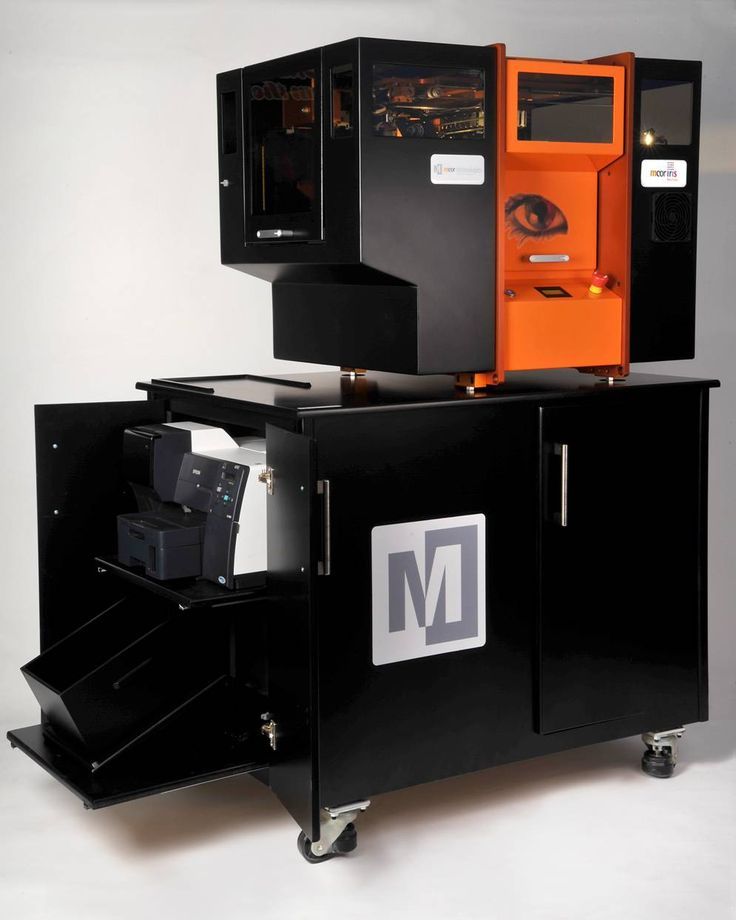 3D printers are widely used for the domestic production of jewelry - necklaces, rings, handbags, etc.
3D printers are widely used for the domestic production of jewelry - necklaces, rings, handbags, etc.
The Fab@Home open project aims to develop general purpose home printers. The devices have been tested in research environments using the latest 3D printing technologies for the production of chemical compounds. The printer can print any material suitable for extrusion from a syringe in the form of a liquid or paste. The development is aimed at the possibility of home production of medicines and household chemicals in remote areas of residence.
Student project OpenReflex resulted in a design for an analog SLR camera suitable for 3D printing.
Clothing
3D printing is gaining ground in the fashion world as couturiers use printers to experiment with swimwear, shoes and dresses. Commercial applications include rapid prototyping and 3D printing of professional athletic shoes - the Vapor Laser Talon for soccer players and New Balance for track and field athletes.
3D bioprinting
EBM titanium medical implants
3D printing is currently being researched by biotech companies and academic institutions. The research is aimed at exploring the possibility of using inkjet/drip 3D printing in tissue engineering to create artificial organs. The technology is based on the application of layers of living cells on a gel substrate or sugar matrix, with a gradual layer-by-layer build-up to create three-dimensional structures, including vascular systems. The first 3D tissue printing production system based on NovoGen bioprinting technology was introduced in 2009year. A number of terms are used to describe this research area: organ printing, bioprinting, computer tissue engineering, etc.
One of the pioneers of 3D printing, research company Organovo, conducts laboratory research and develops the production of functional 3D human tissue samples for use in medical and therapeutic research.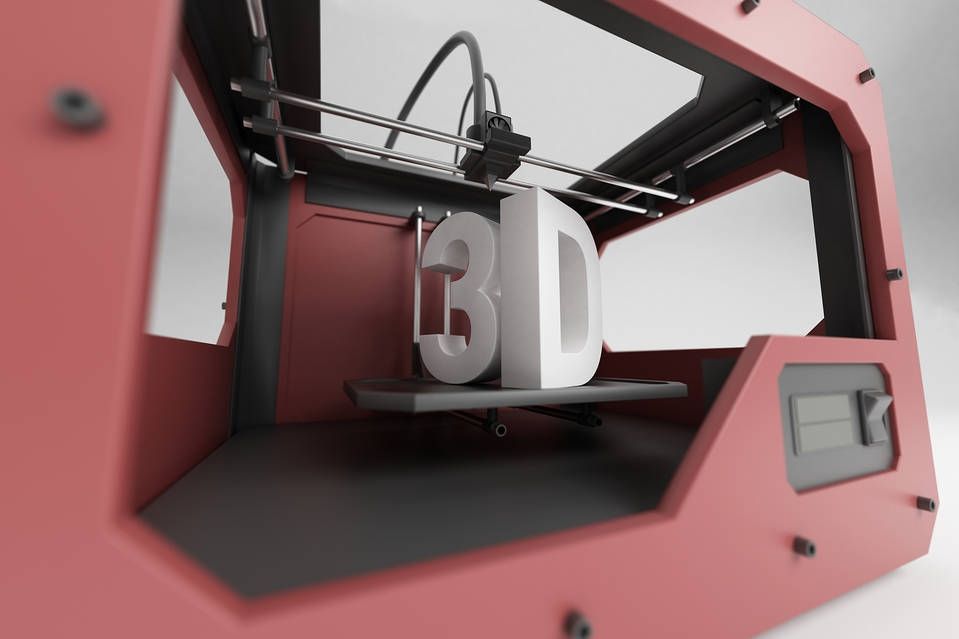 For bioprinting, the company uses a NovoGen MMX 3D printer. Organovo believes that bioprinting will speed up the testing of new medicines before clinical trials, saving time and money invested in drug development. In the long term, Organovo hopes to adapt bioprinting technology for graft and surgical applications.
For bioprinting, the company uses a NovoGen MMX 3D printer. Organovo believes that bioprinting will speed up the testing of new medicines before clinical trials, saving time and money invested in drug development. In the long term, Organovo hopes to adapt bioprinting technology for graft and surgical applications.
3D printing of implants and medical devices
3D printing is used to create implants and devices used in medicine. Successful surgeries include examples such as titanium pelvic and jaw implants and plastic tracheal splints. The most widespread use of 3D printing is expected in the production of hearing aids and dentistry. In March 2014, Swansea surgeons used 3D printing to reconstruct the face of a motorcyclist who was seriously injured in a road accident.
3D printing services
Some companies offer online 3D printing services available to individuals and industrial companies.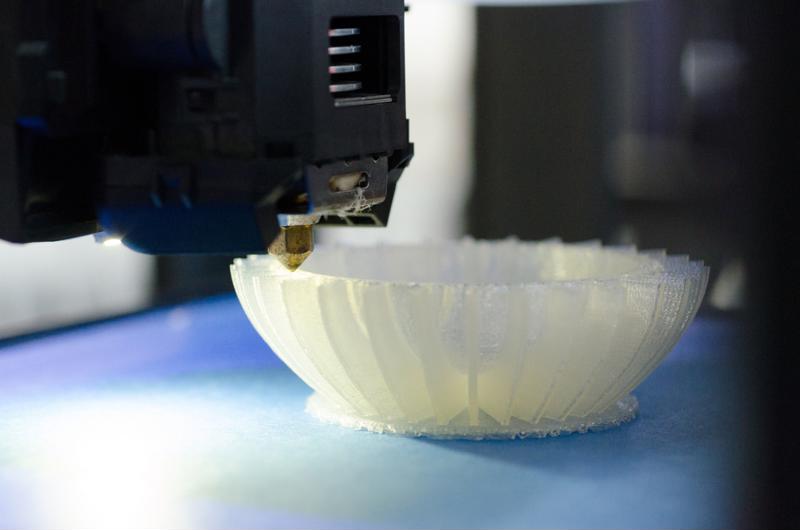 The customer is required to upload a 3D design to the site, after which the model is printed using industrial installations. The finished product is either delivered to the customer or subject to pickup.
The customer is required to upload a 3D design to the site, after which the model is printed using industrial installations. The finished product is either delivered to the customer or subject to pickup.
Exploring new applications
3D printing makes it possible to create fully functional metal products, including weapons.
Future applications of 3D printing may include the creation of open source scientific equipment for use in open laboratories and other scientific applications - fossil reconstruction in paleontology, the creation of duplicates of priceless archaeological artifacts, the reconstruction of bones and body parts for forensic analysis, the reconstruction of heavily damaged evidence collected from crime scenes. The technology is also being considered for application in construction.
In 2005, academic journals began to publish materials on the possibility of using 3D printing technologies in art. In 2007, the Wall Street Journal and Time magazine included 3D design in their list of the 100 most significant achievements of the year. The Victoria and Albert Museum at the London Design Festival in 2011 presented an exhibition by Murray Moss entitled "Industrial Revolution 2.0: how the material world materializes again", dedicated to 3D printing technologies.
The Victoria and Albert Museum at the London Design Festival in 2011 presented an exhibition by Murray Moss entitled "Industrial Revolution 2.0: how the material world materializes again", dedicated to 3D printing technologies.
In 2012, a University of Glasgow pilot project showed that 3D printing could be used to produce chemical compounds, including hitherto unknown ones. The project printed chemical storage vessels into which “chemical ink” was injected using additive machines and then reacted. The viability of the technology was proven by the production of new compounds, but a specific practical application was not pursued during the experiment. Cornell Creative Machines has confirmed the feasibility of creating food products using hydrocolloid 3D printing. Professor Leroy Cronin of the University of Glasgow has suggested using "chemical ink" to print medicines.
The use of 3D scanning technology makes it possible to create replicas of real objects without the use of casting methods, which are costly, difficult to perform and can have a destructive effect in cases of precious and fragile objects of cultural heritage.
An additional example of 3D printing technologies being developed is the use of additive manufacturing in construction. This could make it possible to accelerate the pace of construction while reducing costs. In particular, the possibility of using technology to build space colonies is being considered. For example, the Sinterhab project aims to explore the possibility of additive manufacturing of lunar bases using lunar regolith as the main building material. Instead of using binding materials, the possibility of microwave sintering of regolith into solid building blocks is being considered.
Additive manufacturing allows you to create waveguides, sleeves and bends in terahertz devices. The high geometric complexity of such products could not be achieved by traditional production methods. A commercially available professional EDEN 260V setup was used to create structures with a resolution of 100 microns. The printed structures were galvanized with gold to create a terahertz plasmonic apparatus.
China has allocated nearly $500 million. for the development of 10 national institutes for the development of 3D printing technologies. In 2013, Chinese scientists began printing living cartilage, liver and kidney tissue using specialized 3D bioprinters. Researchers at Hangzhou Dianqi University have even developed their own 3D bioprinter for this challenging task, dubbed Regenovo. One of Regenovo's developers, Xu Mingeng, said it takes less than an hour for the printer to produce a small sample of liver tissue or a four to five inch sample of ear cartilage. Xu predicts the emergence of the first full-fledged printed artificial organs within the next 10-20 years. That same year, researchers at the Belgian Hasselt University successfully printed a new jaw for an 83-year-old woman. After the implant is implanted, the patient can chew, talk and breathe normally.
In Bahrain, sandstone-like 3D printing has created unique structures to support coral growth and restore damaged reefs.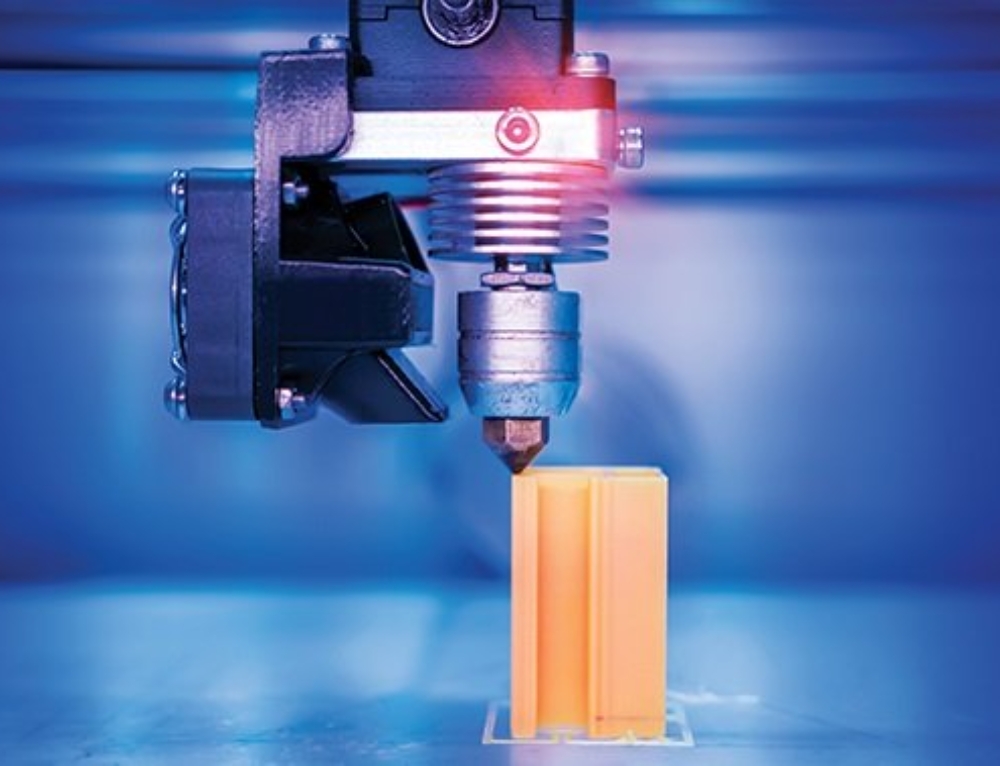 These structures have a more natural shape than previously used structures and do not have the acidity of concrete.
These structures have a more natural shape than previously used structures and do not have the acidity of concrete.
Intellectual property
Section of liver tissue printed by Organovo, which is working to improve 3D printing technology for the production of artificial organs
3D printing has been around for decades, and many aspects of the technology are subject to patents, copyrights, and trademark protection. However, from a legal point of view, it is not entirely clear how intellectual property protection laws will be applied in practice if 3D printers become widely used.
distribution and will be used in household production of goods for personal use, non-commercial use or for sale.
Any of the protective measures may negatively affect the distribution of designs used in 3D printing or the sale of printed products. The use of protected technologies may require the permission of the owner, which in turn will require the payment of royalties.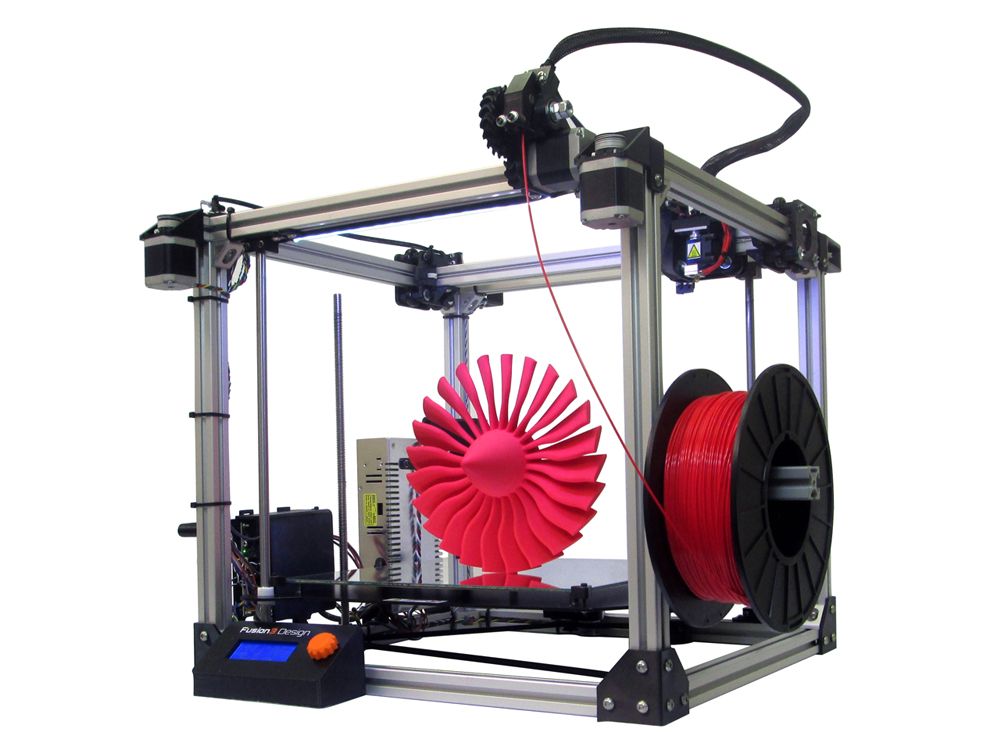
Patents cover certain processes, devices, and materials. The duration of patents varies from country to country.
Often, copyright extends to the expression of ideas in the form of material objects and lasts for the life of the author, plus 70 years. Thus, if someone creates a statue and obtains copyright, it will be illegal to distribute designs for printing of an identical or similar statue.
Influence of 3D printing
Additive manufacturing requires manufacturing companies to be flexible and constantly improve available technologies to stay competitive. Advocates of additive manufacturing predict that the opposition between 3D printing and globalization will escalate as home production displaces trade in goods between consumers and large manufacturers. In reality, the integration of additive technologies into commercial production serves as a complement to traditional subtractive methods, rather than a complete replacement for the latter.
Space exploration
In 2010, work began on the application of 3D printing in zero gravity and low gravity. The main goal is to create hand tools and more complex devices "as needed" instead of using valuable cargo volume and fuel to deliver finished products to orbit.
Even NASA is interested in 3D printing
At the same time, NASA is conducting joint tests with Made in Space to assess the potential of 3D printing to reduce the cost and increase the efficiency of space exploration. Nasa's additive-manufactured rocket parts were successfully tested in July 2013, with two fuel injectors performing on par with conventionally produced parts during operational tests subjecting the parts to temperatures of around 3,300°C and high pressure levels. It is noteworthy that NASA is preparing to launch a 3D printer into space: the agency is going to demonstrate the possibility of creating spare parts directly in orbit, instead of expensive transportation from the ground.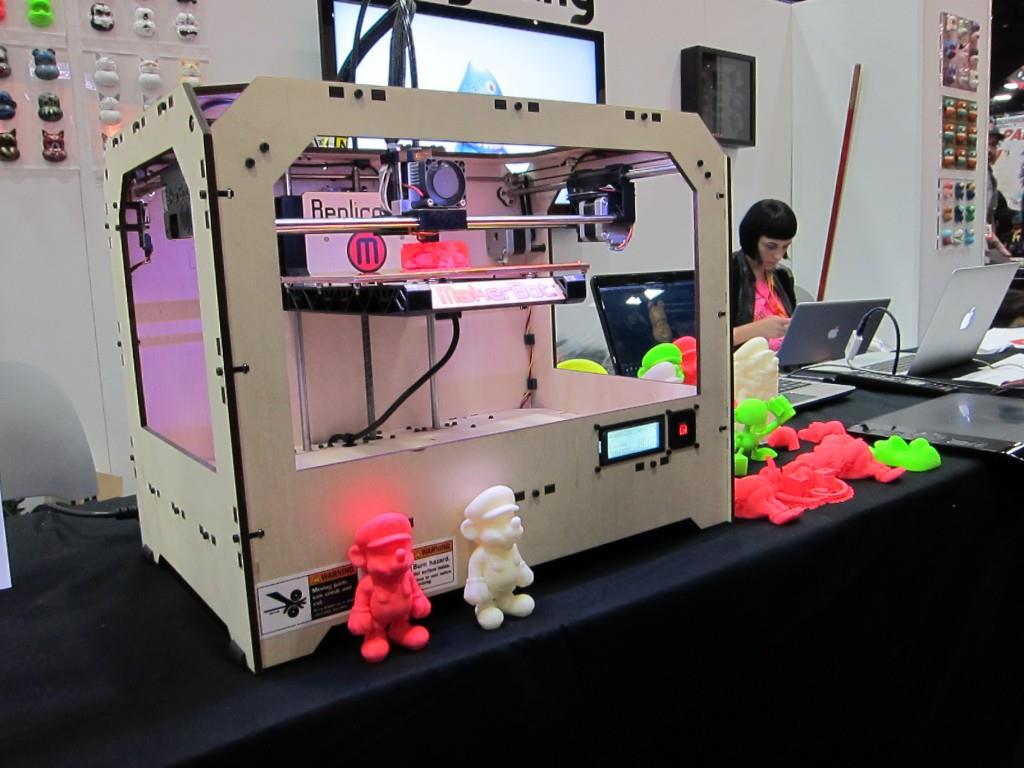
Social change
The topic of social and cultural change as a result of the introduction of commercially available additive technologies has been discussed by writers and sociologists since the 1950s. One of the most interesting assumptions was the possible blurring of boundaries between everyday life and workplaces as a result of the massive introduction of 3D printers into the home. It also points to the ease of transferring digital designs, which, in combination with local production, will help reduce the need for global transportation. Finally, copyright protection may change to reflect the ease of additive manufacturing of many products.
Firearms
In 2012, US company Defense Distributed released plans to create a "design of a functional plastic weapon that could be downloaded and played by anyone with access to a 3D printer." Defense Distributed has developed a 3D printed version of the receiver for the AR-15 rifle, capable of withstanding more than 650 shots, and a 30-round magazine for the M-16 rifle. The AR-15 has two receivers (lower and upper), but legal registration is tied to the lower receiver, which is stamped with a serial number. Shortly after Defense Distributed created the first working drawings for the production of plastic weapons in May 2013, the US State Department requested that the instructions be removed from the company's website.
The AR-15 has two receivers (lower and upper), but legal registration is tied to the lower receiver, which is stamped with a serial number. Shortly after Defense Distributed created the first working drawings for the production of plastic weapons in May 2013, the US State Department requested that the instructions be removed from the company's website.
The distribution of blueprints by Defense Distributed has fueled discussion about the possible impact of 3D printing and digital processing devices on the effectiveness of gun control. However, the fight against the proliferation of digital weapon models will inevitably face the same problems as attempts to prevent the trade in pirated content.
Go to the main page of the 3D Printing Encyclopedia0001
A bit of history
Modern desktop 3D printing began just over 10 years ago with the emergence of the RepRap enthusiast community. The goal of the project was to "self-copy", replicate the components of the 3D printers themselves. The task was to small-scale production of 3D printers on the 3D printers themselves. This idea was picked up and developed by the Czech engineer and entrepreneur Josef Prusa. He created the largest 3D printing farm to print plastic parts produced by his 3D printer factory. The total number of printers in his factory reaches 1000 pieces, this achievement was even registered in the Guinness Book of Records.
The task was to small-scale production of 3D printers on the 3D printers themselves. This idea was picked up and developed by the Czech engineer and entrepreneur Josef Prusa. He created the largest 3D printing farm to print plastic parts produced by his 3D printer factory. The total number of printers in his factory reaches 1000 pieces, this achievement was even registered in the Guinness Book of Records.
In this case, I would note Josef's marketing talent, because his company produces about 100 thousand printers a year and its production can hardly be called small-scale. However, he continues to print plastic components for his printers on them. Thus, their reliability is emphasized, because printing is part of the testing process, on the one hand, and on the other hand, it demonstrates to customers the quality of models made on a 3D printer. The effectiveness of this approach, from the point of view of the production itself, is negligible. One injection molding machine would do the job easily, saving a lot of space and electricity, and there would be no need for a large number of jobs.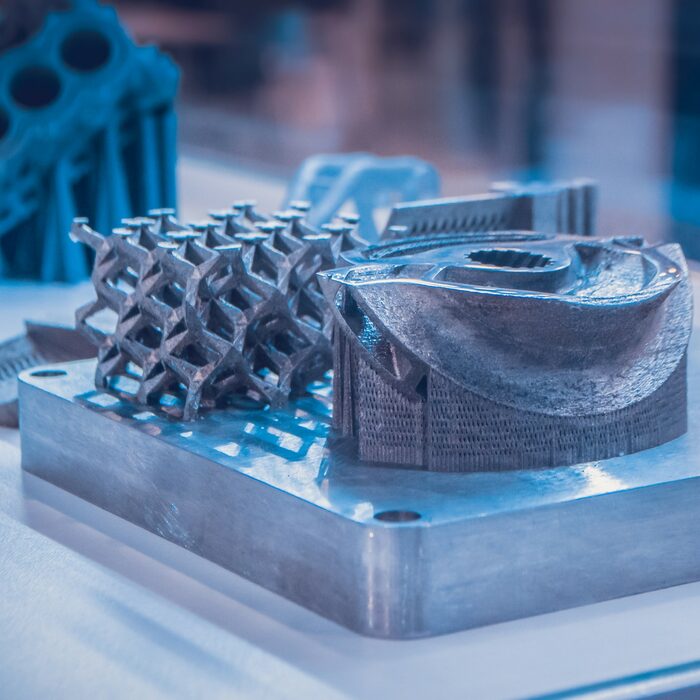
3D printing capabilities for low volume production
So what are the possibilities of desktop 3D printing for small-scale production? I note right away that this article is about desktop 3D printers. I will not consider industrial systems in it, since they are in a different price category, both for the equipment itself and for printing materials.
To begin with, it is worth talking about what can be produced on 3D printers. Usually we are talking about small plastic elements, plugs, clamps, housings, holders and other similar elements. The choice is to order a mold or 3D print these elements. It is easy to make such a choice by calculating the cost of the mold, the cost of products obtained on an injection molding machine and the cost of printing the same product on a 3D printer of the required circulation. You need to understand how many units of production per unit of time you need to produce and, accordingly, how many and which 3D printers will be needed for this task. Having made such an initial analysis and having previously understood that 3D printing is what suits you, you should carefully start choosing equipment.
Having made such an initial analysis and having previously understood that 3D printing is what suits you, you should carefully start choosing equipment.
If you already know what you will print, the choice becomes easier. If you plan to produce models with different tasks in the future, then before buying, you should carefully analyze the possible options. The main factor influencing the choice of equipment is the presence or absence of certain functionality in future models. The printer should print with materials that will ensure the functionality of your products. For example, a future part must withstand a certain heating or cooling temperature, be strong, rigid, wear and shock resistant, or, conversely, soft, rubber-like, elastic, flexible. The more versatile a 3D printer is, the more expensive it is. Indeed, for printing various types of plastic, printers are equipped with closed chambers, interchangeable extruders, perforated platforms, feed mechanisms with adjustable filament pressure, etc.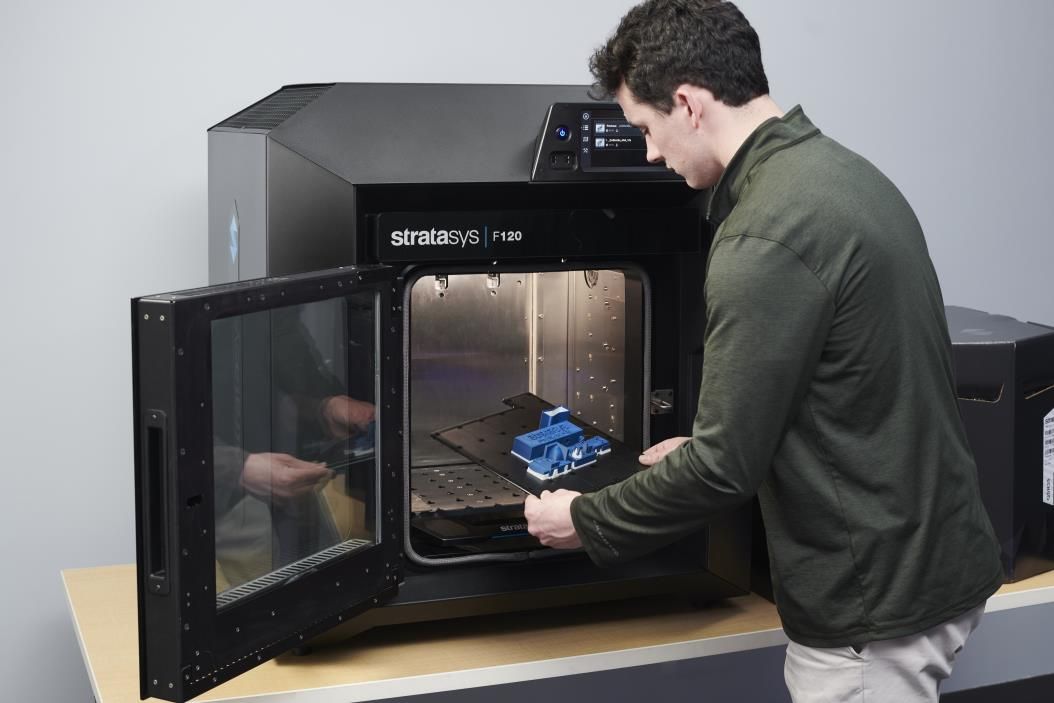
FDM/FFF solution options
This is the FDM/FFF printing technology most commonly used today for small-scale production. Let's look at a few technological solutions that manufacturers offer.
The most affordable and suitable for printing simple models from plastics such as PLA or PETG is a solution based on budget printers such as Creality Ender-3. These are very simple models that are installed on racks.
Pictured is a 3D printing farm in Creality3D
Among the advantages of this solution: the ability to quickly deploy it in almost any suitable place, quickly increase the number of printers to increase the productivity of the farm. Of the minuses: the impossibility of printing with engineering plastics, the need to manually remove models, as well as the impossibility of remote monitoring and control over printing.
The next level of organization of small-scale production is a farm of printers that can cope with the most diverse tasks.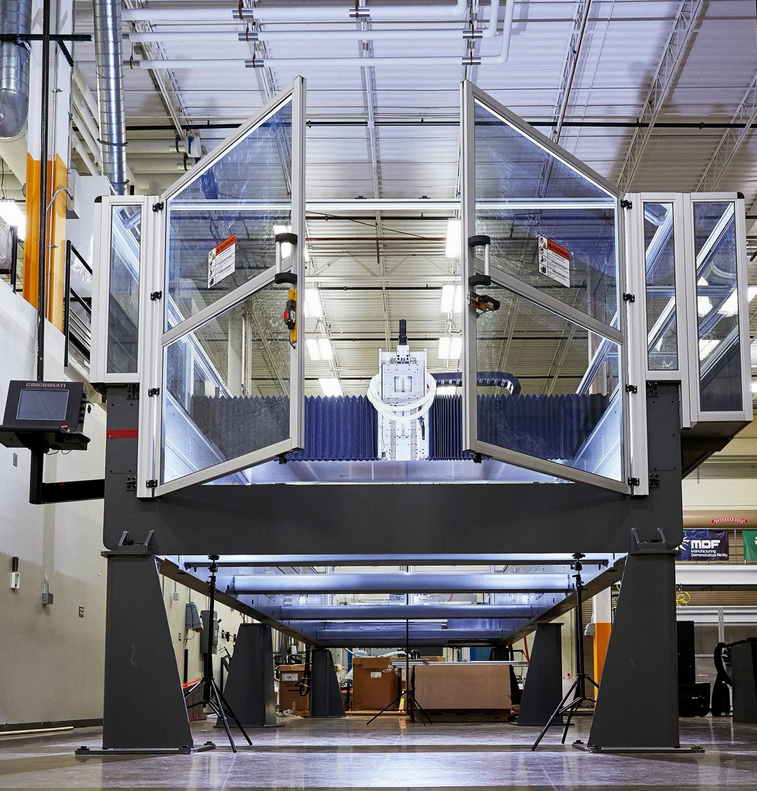 For example, a farm built on the basis of Raise3D Pro2 3D printers. Each such printer is equipped with two extruders, a closed camera and a built-in webcam for remote monitoring. On such printers, you can easily change the "manufactured" models. Today it can be simple plugs made of PLA plastic, and tomorrow it will be complex models made of carbon fiber or nylon gears. The disadvantages include only the high cost of equipment and the remaining need to shoot finished models manually.
For example, a farm built on the basis of Raise3D Pro2 3D printers. Each such printer is equipped with two extruders, a closed camera and a built-in webcam for remote monitoring. On such printers, you can easily change the "manufactured" models. Today it can be simple plugs made of PLA plastic, and tomorrow it will be complex models made of carbon fiber or nylon gears. The disadvantages include only the high cost of equipment and the remaining need to shoot finished models manually.
Pictured is a 3D printing farm at 2050.AT
Another option for such a solution is a farm based on printers with two independent IDEX type extruders. In the photo below you can see a similar farm based on Raise3D E2 printers. The solution has the added benefit of increasing productivity: each printer can print two identical models at the same time instead of one. The disadvantages remain the same: the need to shoot models manually and the rather high cost of the printers themselves. The benefits are the same plus increased performance.
The benefits are the same plus increased performance.
Pictured is a 3D printing farm at 3D.RU
If for the previous solutions small-scale production is one of the possible applications, then the printer, which will be discussed further, is created specifically for this task. The TierTime X5 is a mini conveyor with 12 interchangeable pads for long, uninterrupted printing. After the printing of the model or models is completed, the platform moves off the platform, and a new one takes its place, after which printing can continue. In this case, both the same and different models can be printed. The printer also maintains a print queue, different employees can send jobs to it, and they will be executed as they arrive. Models from the sites will still have to be removed manually, so it’s too early to talk about full automation. Of the minuses, it is worth noting the high cost of equipment and its low productivity. For comparable money, you can buy up to 10 printers of the same level, but their performance will be 10 times greater.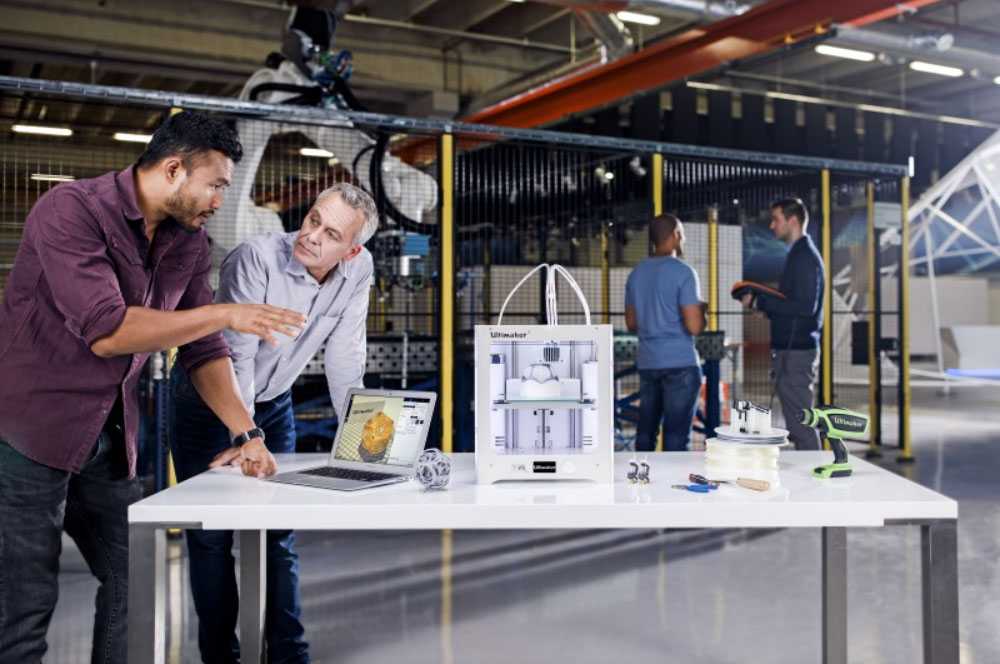 True, they will take up much more space, and it is much more difficult to monitor 10 printers than one. But at the same time, one must take into account that if one of the 10 printers breaks down, you still have 9 more. If the only printer breaks, you are left without your equipment for an indefinite period of time, depending on the timing of the repair.
True, they will take up much more space, and it is much more difficult to monitor 10 printers than one. But at the same time, one must take into account that if one of the 10 printers breaks down, you still have 9 more. If the only printer breaks, you are left without your equipment for an indefinite period of time, depending on the timing of the repair.
Another printer option designed specifically for low volume production is the Creality3D CR-30 PrintMill ribbon type model. This printer is created on the principle of a conveyor belt, models can be printed endlessly and fall into the box themselves, you just have to remember to change the plastic. Human participation is minimal, but due to the complex design, where printing is carried out at an angle of 45 ° C, there are many restrictions on the geometry of models, the location of supports and other nuances. But on the other hand, this is the most automated process of all possible today, especially given the modest budget for the purchase.
In an effort to fully automate small-scale production, manufacturers and builders of 3D printing factories or small-scale production add various equipment. In particular, to automate the removal of models, cobots (collaborative robots) are used, which are programmed to remove the platform along with the printed model and install a new printing platform, after which printing resumes. This is an insanely expensive solution that doesn't really improve productivity, and can only be justified in countries with incredibly high wages.
Pictured is a VooDoo Manufacturing 3D printing truss
Another possible solution for the complete automation of the small-scale production process using 3D printing was presented by the Latvian company Mass Portal. She created a portal system for this task. The printers are installed in a rack, where the manipulator arm removes the platforms with finished models and transfers them to a special storage rack. Such a solution almost completely automates the entire process, but its cost is so high, and the system itself is so cumbersome that it is not worth talking about its effectiveness for a wide range of tasks.
Photopolymer Solutions
All solutions discussed earlier in this article were created on the basis of FDM / FFF technology, which involves printing using molten plastic filament. But recently, photopolymer 3D printers are gaining more popularity, which print on the principle of forming a model from a liquid photopolymer. From the point of view of small-scale production, this technology has a number of advantages. First of all, performance. The technology allows you to illuminate the entire layer at once - in this way the printer spends the same time printing one or any other number of models that fit into the construction area. If earlier desktop photopolymer printers had modest pad sizes and, accordingly, their production potential was not very high, then this year a number of models with a large print area and high detail were introduced, for example, the Phrozen Sonic Mega 8K printer model.
Printing models on the photo lasted 3.5 hours. It is not difficult to calculate the performance of a printer. In this case, even one printer is a mini-factory and is capable of solving serious production problems. It is also important to note that unlike FDM/FFF printers, all photoresin 3D printers are inherently universal - you can print on them with any resins available on the market or even those that will appear in the future.
Not surprisingly, the creators of 3D printing trusses were inspired by the huge opportunities that were opening up, and many small-scale productions were created based on such equipment. For example, the British company Photocentric has opened the largest such center in Europe based on its LC Magna model. It came in handy during the pandemic, when it was necessary to urgently establish the production of elements necessary for the treatment of patients, for example, replaceable valves for ventilators.
Unfortunately, it is also not complete without significant disadvantages, but let's talk about everything in order. First of all, this is the process of post-processing of printed models, which consists of washing the models in alcohol and subsequent illumination in a UV camera. Without these procedures, the model will not acquire the final quality. These processes cannot be automated, they require a lot of labor, and this must be taken into account when choosing equipment. In addition, it should be taken into account that the cost of photopolymer resin is on average 3 times more than plastic for 3D printing, and, accordingly, the cost of the resulting products will be higher. Another factor to consider is the need for special preparation of the installation site for printers, the availability of high-quality ventilation and the possibility of waste disposal.
Totals
In summary, even a single 3D printer is a suitable solution for small-scale production. 3D printing is ideal for small-scale production. The main thing is to choose the right equipment, calculate its payback period and the cost of the final product.


